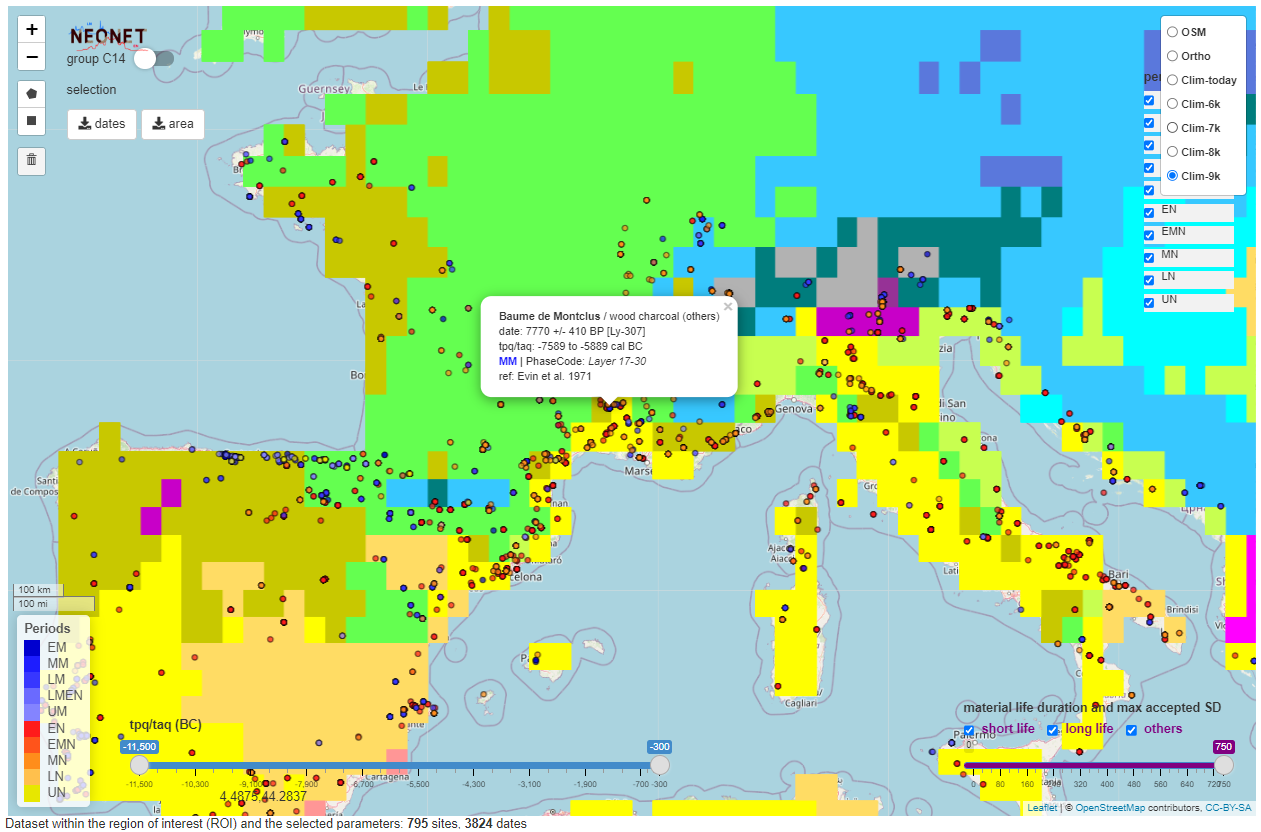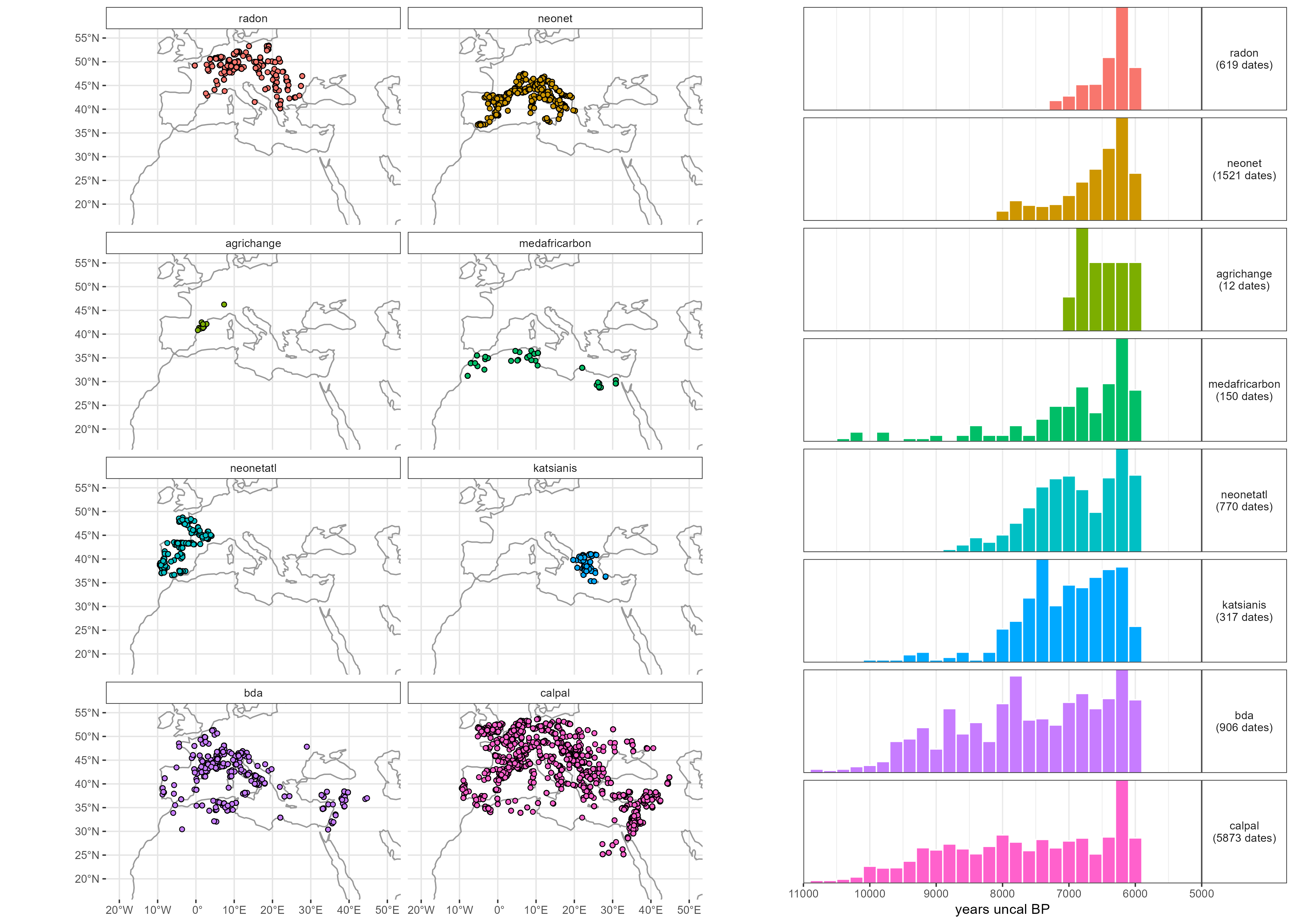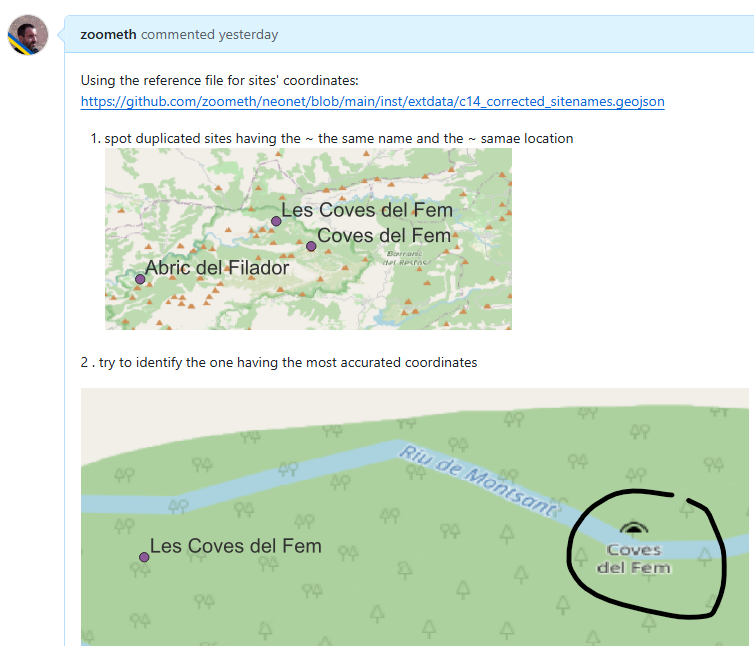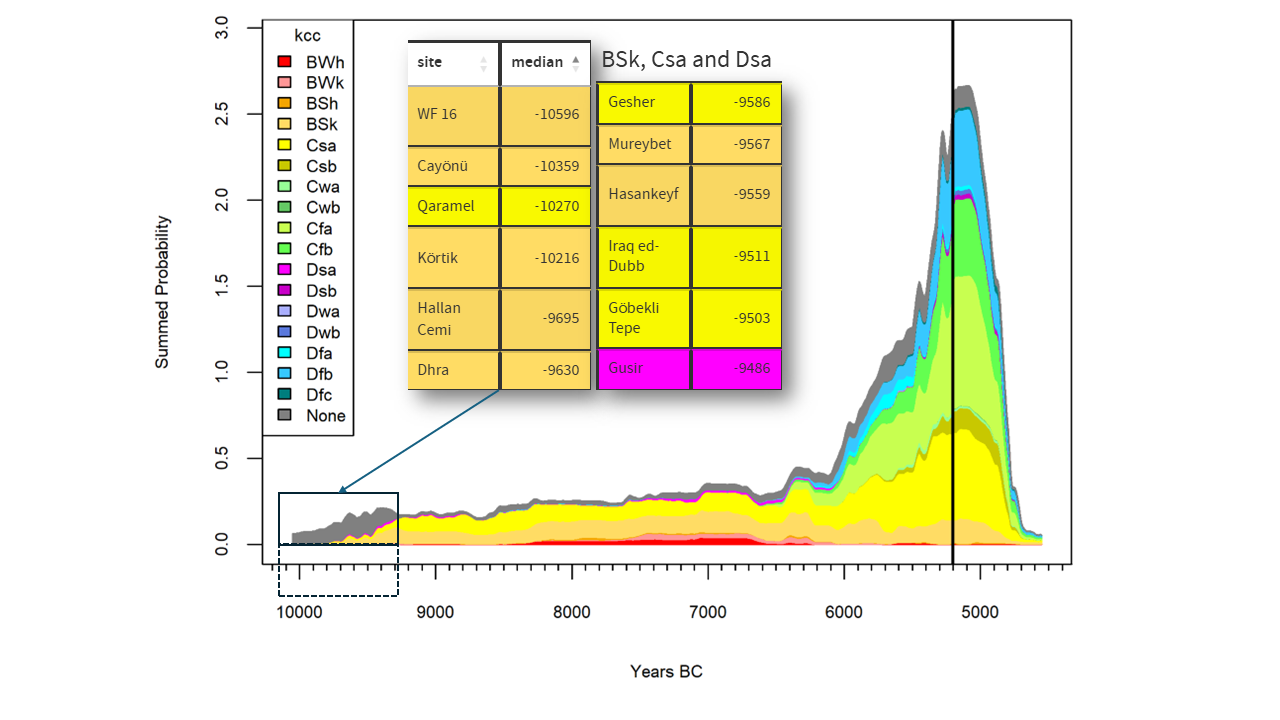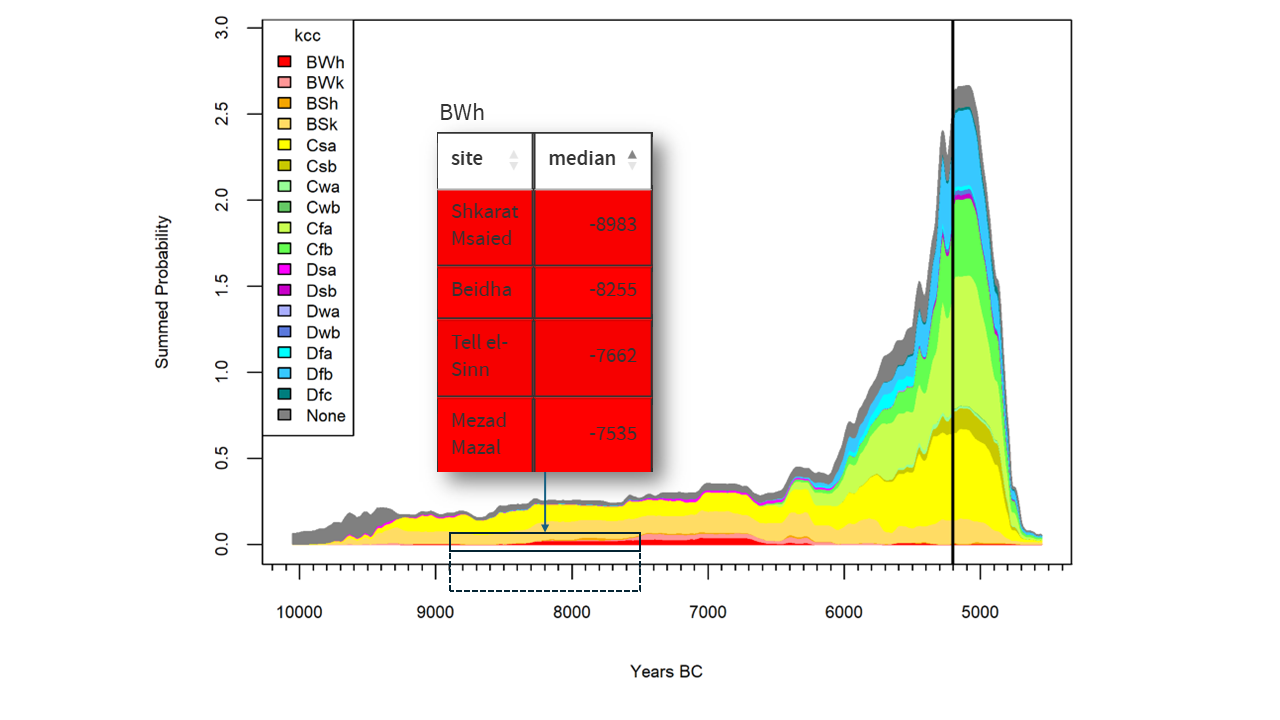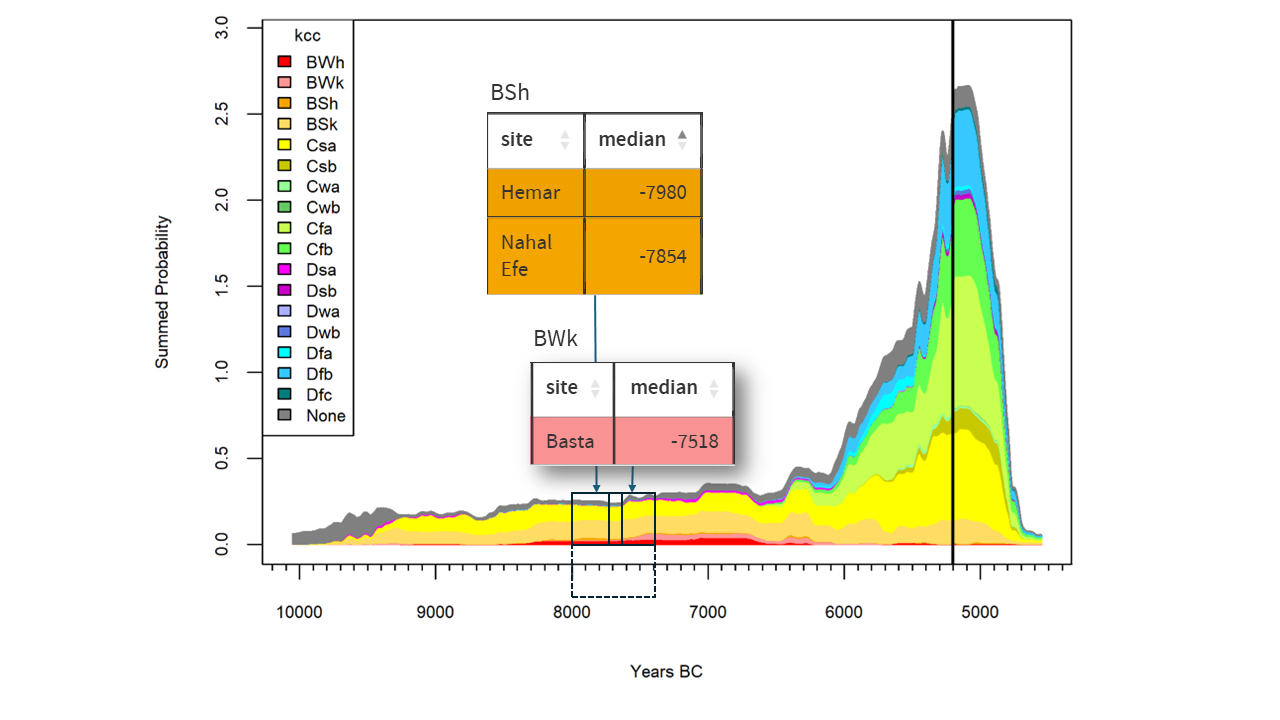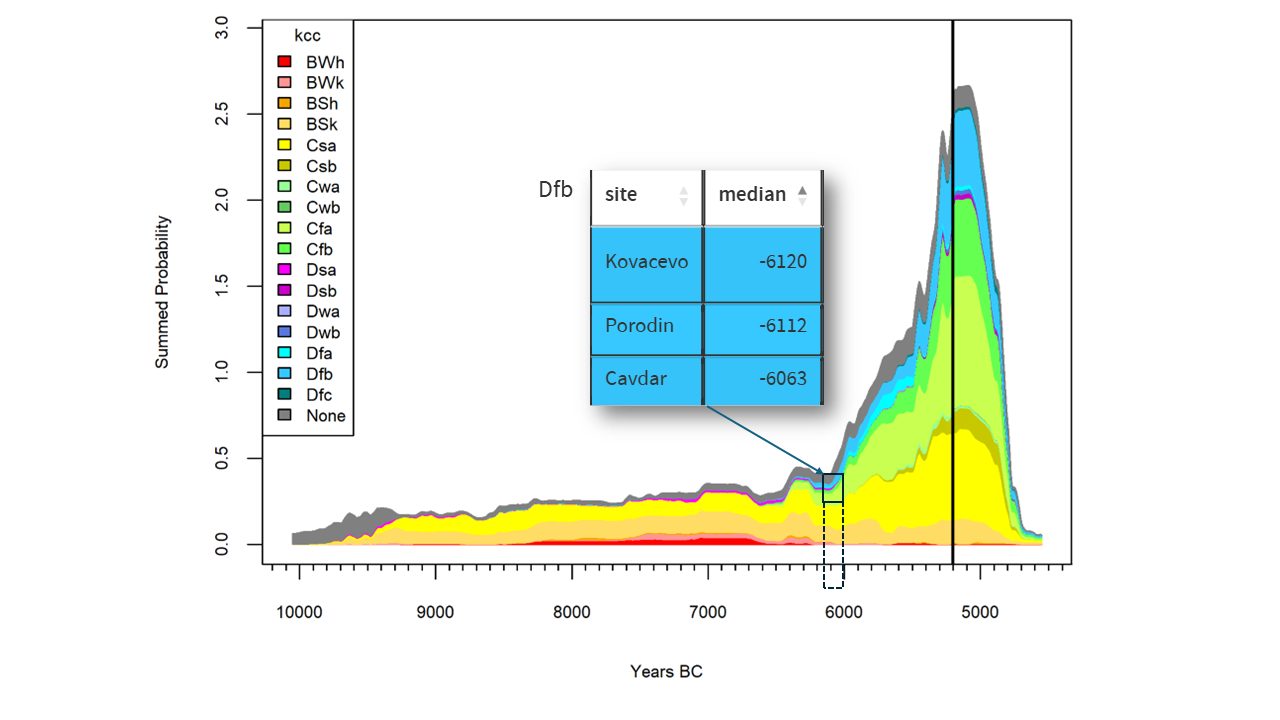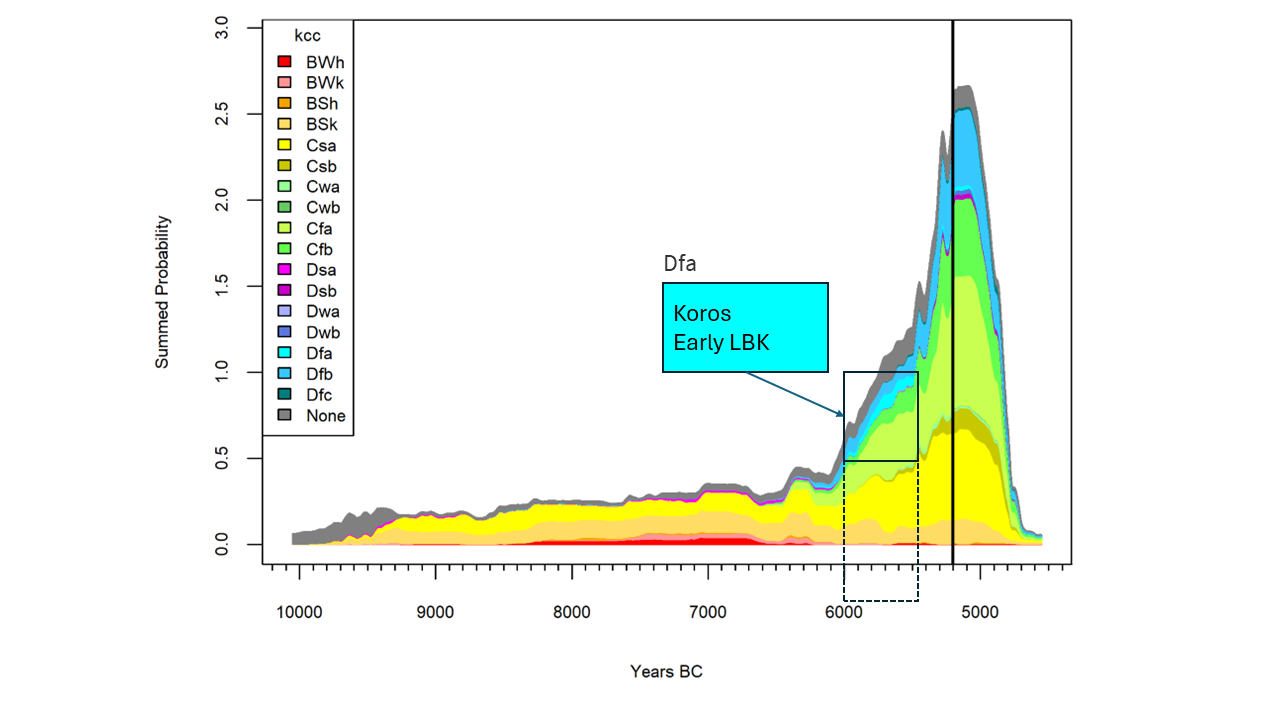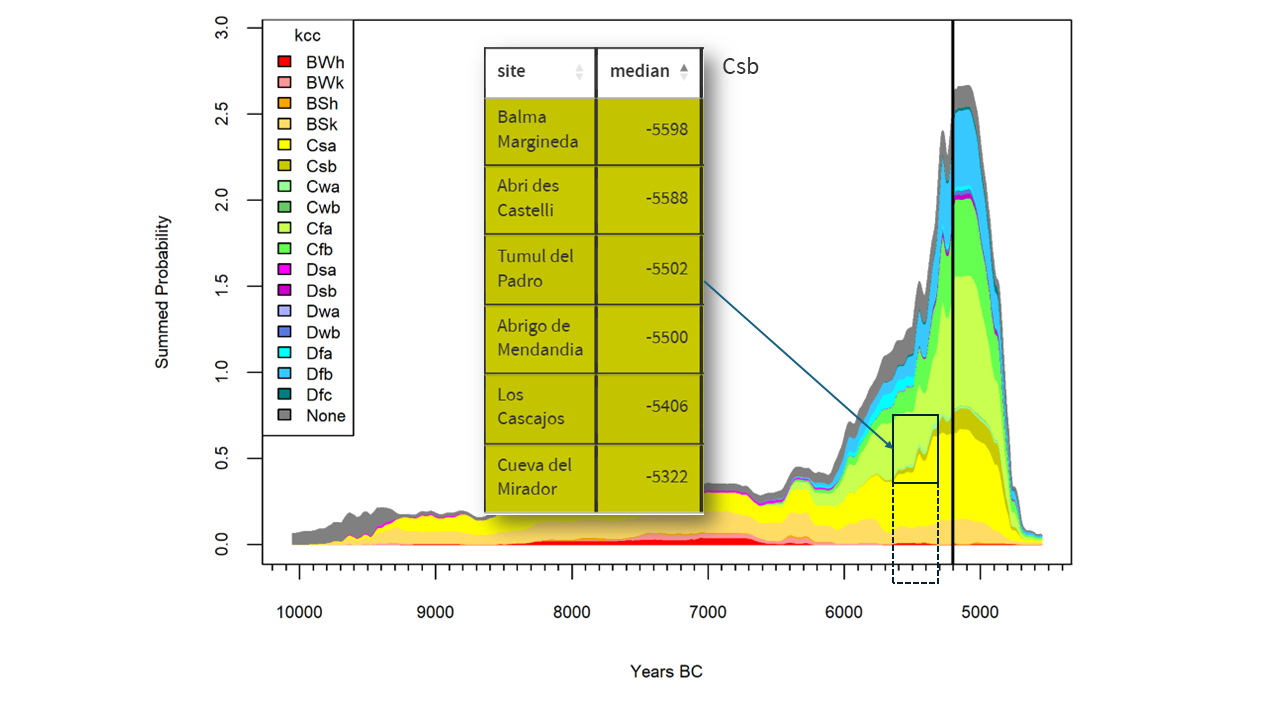Climates during the Spread of Farming in the Mediterranean
University of Oxford
Università di Pisa
University of Cambridge
Introduction
Huet & Mazzucco -  - 18 Dec 2024, ASD-CSIC, Spain
- 18 Dec 2024, ASD-CSIC, Spain
Grains and climates

↑️ Quesnay, F. (1757). “Grains”. In D. Diderot & J. le Rond d’Alembert (Eds.), L’Encyclopédie (Vol. 7), pp. 812-31. from bibnum.institutdefrance.fr.
Scott, J. C. (2017). Against the grain: A Deep History of the Earliest States. Yale University Press. →

Framework
Neonet project
Early Mesolithic (EM)
Middle Mesolithic (MM)
Late Mesolithic (LM)
Early Neolithic (EN)
Middle Neolithic (MN)
Late Neolithic (LN)

Baume de Montclus, stacked SPD

Franchthi cave, stacked SPD

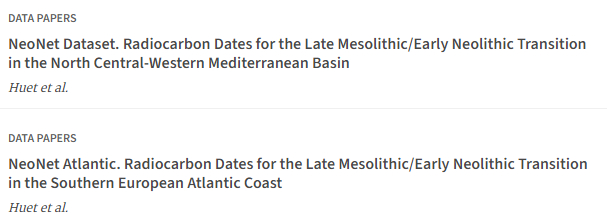

- Open Data, Open Source, Open Access
- Scalable, Incrementable, Reusable, Analyzable
Materials and Methods
Radiocarbon data
Brami, M.N. A graphical simulation of the 2,000-year lag in Neolithic occupation between Central Anatolia and the Aegean basin. Archaeol Anthropol Sci 7, 319–327 (2015). https://doi.org/10.1007/s12520-014-0193-4


| EM - Early Mesolithic |
| MM - Middle Mesolithic |
| LM - Late Mesolithic |
| EN - Early Neolithic |
| MN - Middle Neolithic |
| LN - Late Neolithic |
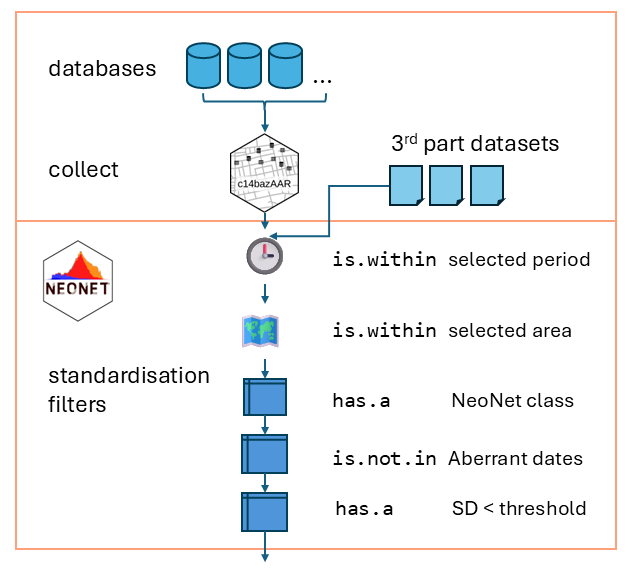
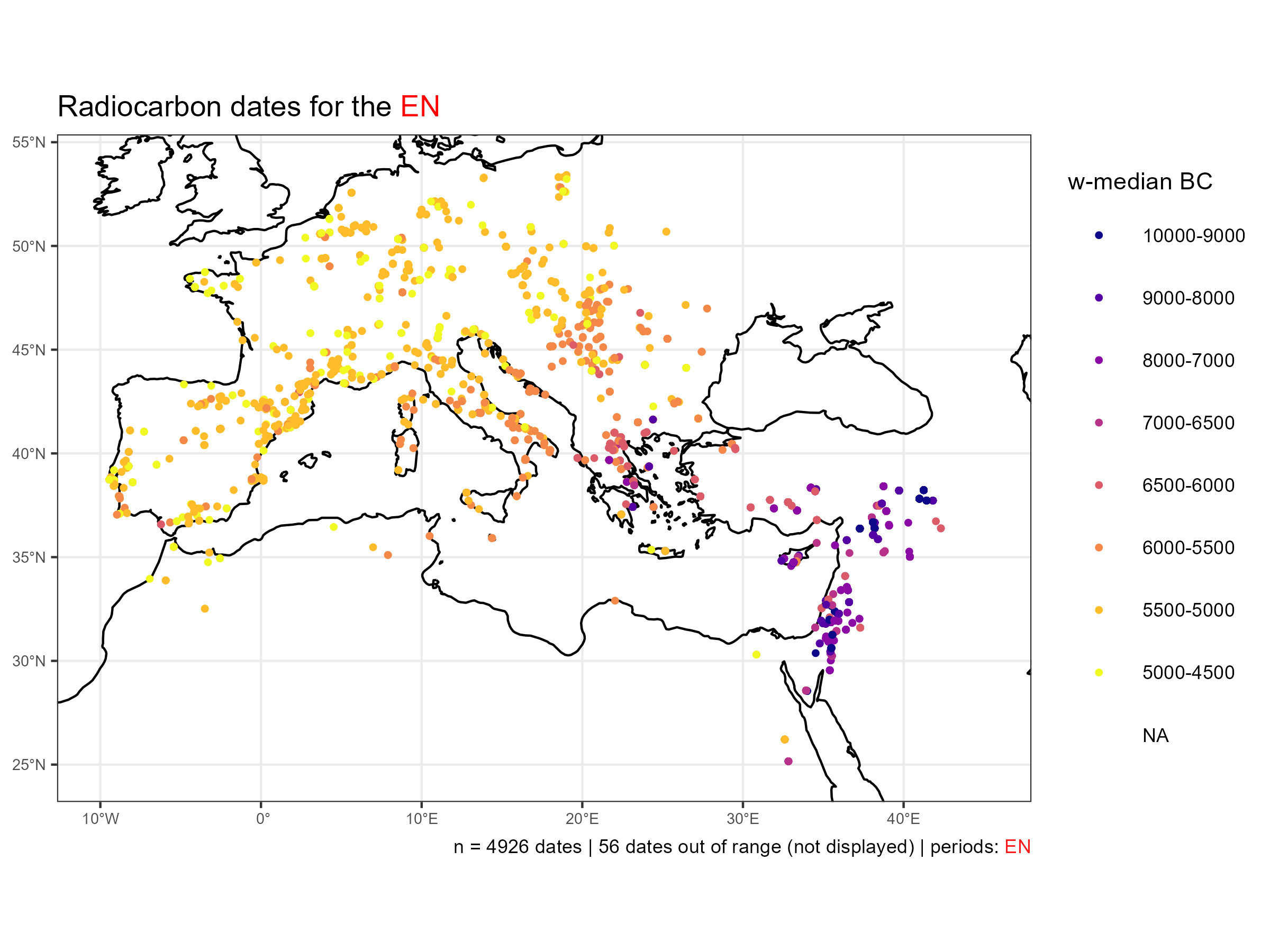

Climates data and model
Mean annual temperature (ºC)

Annual precipitation (mm year -1)

Biome (pollen-based)

Beyer et al. 20203


https://github.com/EvolEcolGroup/pastclim
A <- Thot >= 18 & !B
Af <- A & Pdry >= 60
Am <- A & !Af & Pdry >= 100 - MAP / 25
Aw <- A & !Af & Pdry < 100 - MAP / 25function pastclim::koeppen_geiger()
| code | climate | colors (classes) |
|---|---|---|
| A* | Tropical |    |
| B* | Arid |     |
| C* | Temperate |          |
| D* | Cold |             |
| E* | Polar |   |
function neoent::neo_kss_create()
Modelling dates
Most recent LM and most ancient EN date weighted medians (w-median) by site.
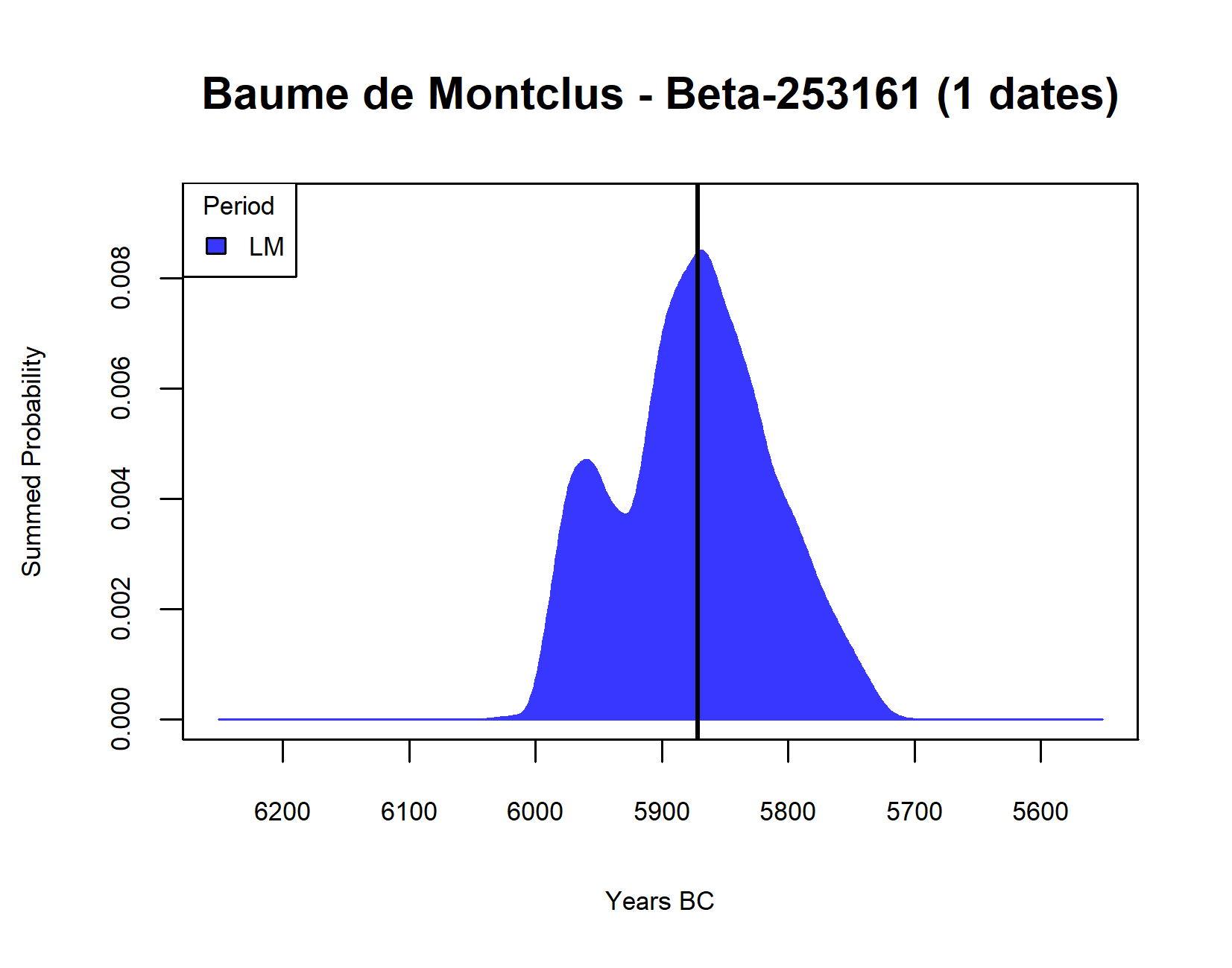

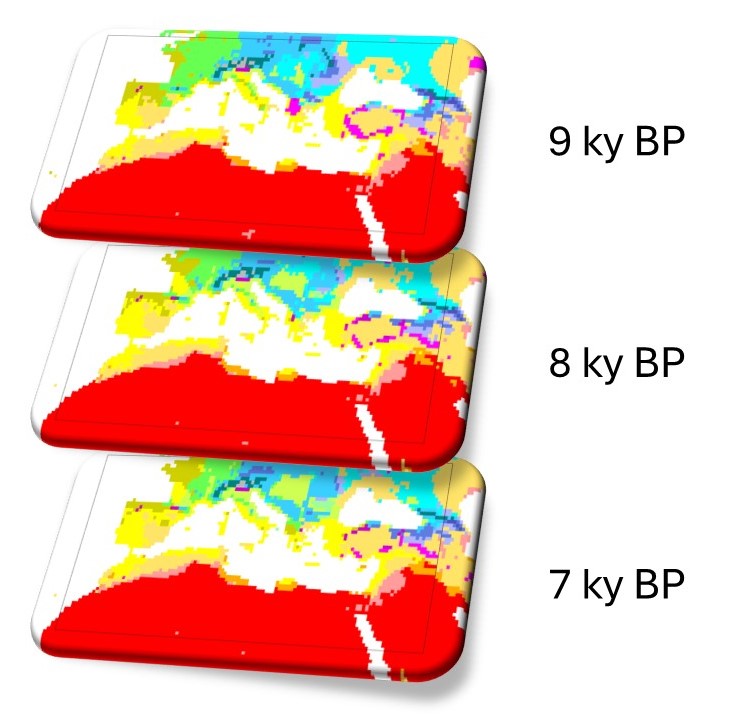


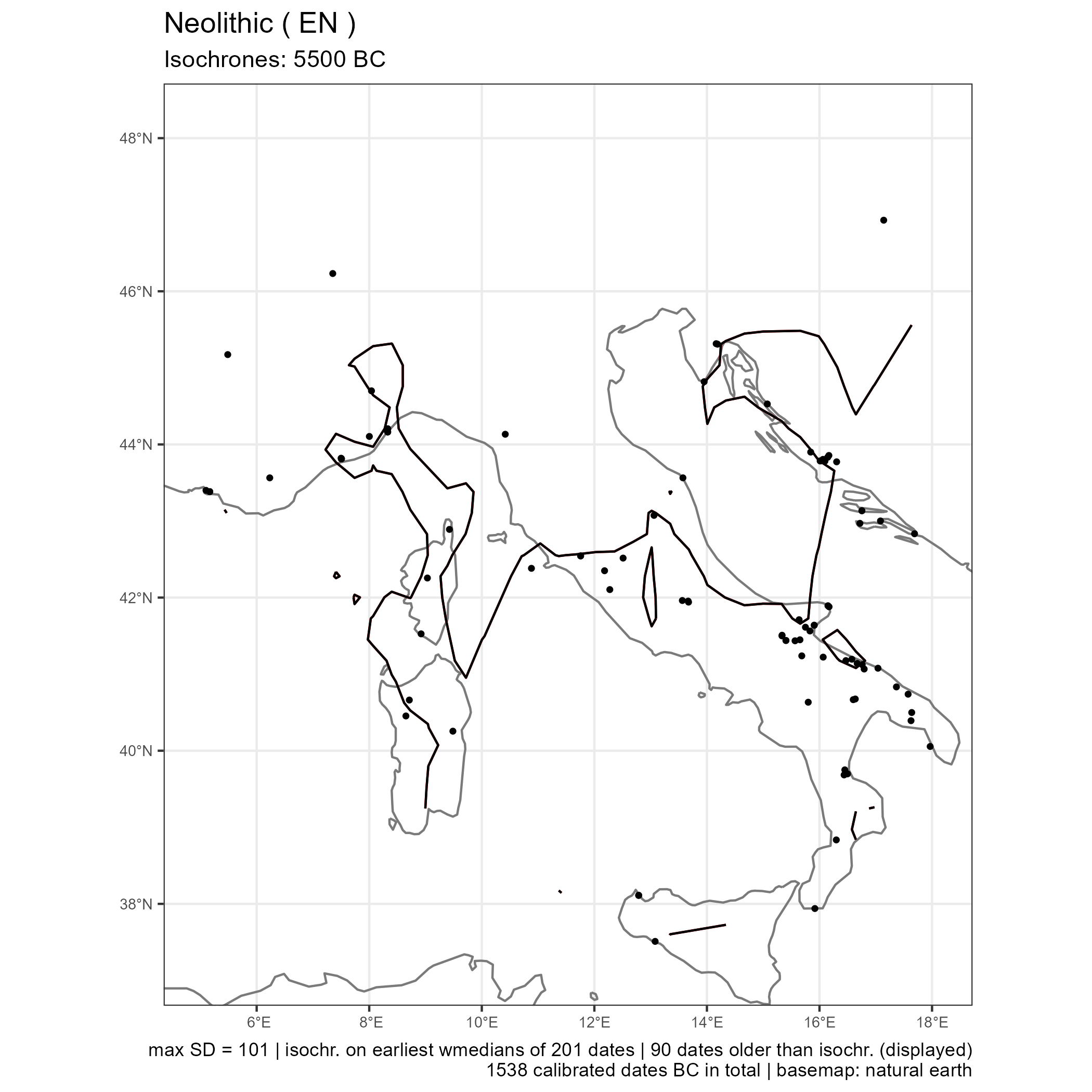
Spread of Neolithic in the Mediterranean
Near East (9,000 BC)
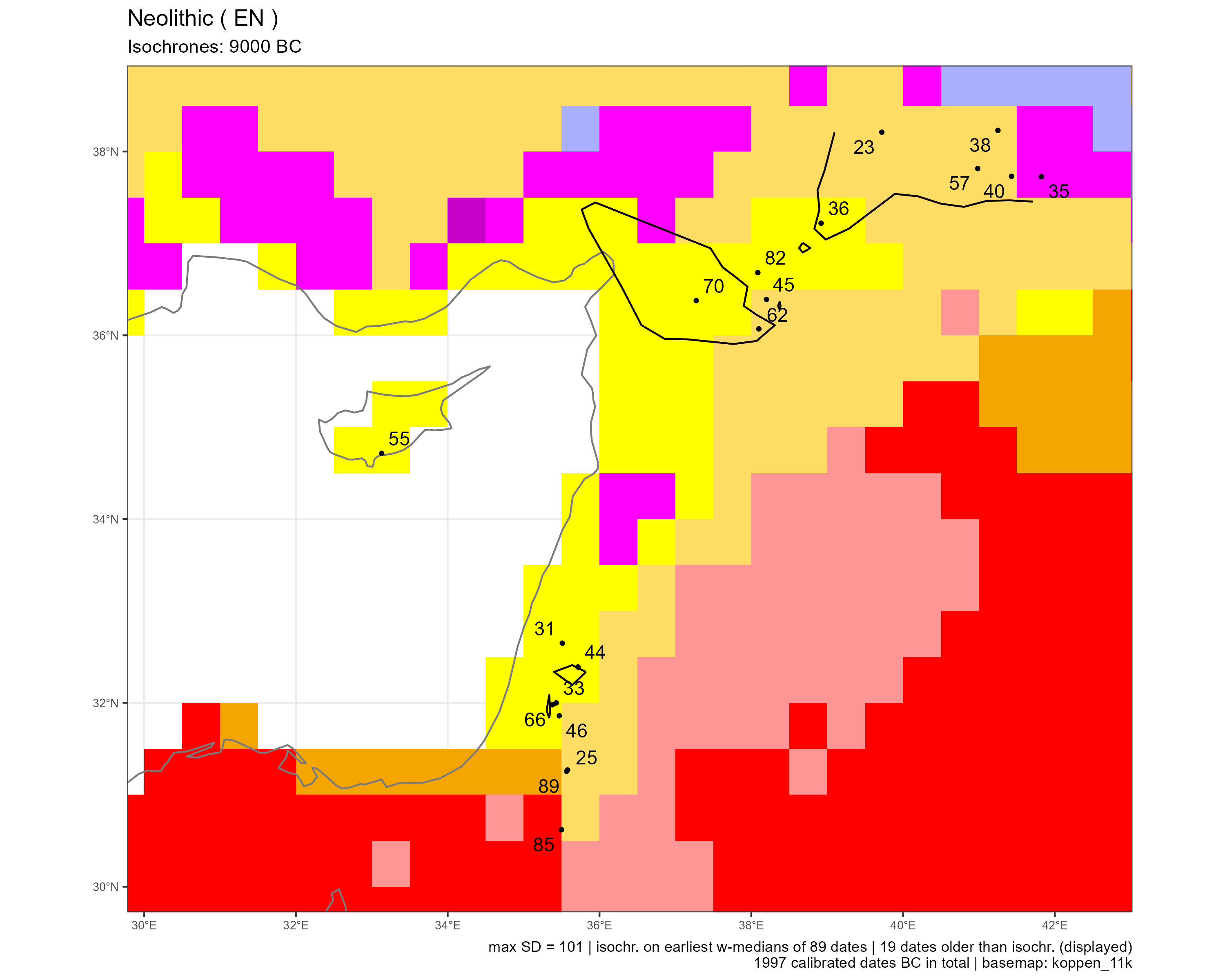



- Neolithic mostly on Csa (Temperate, dry summer, hot summer) and BSk (Temperate, dry summer, warm summer) climates
- North and South Levant farmers separated by Dsa (Cold, dry summer, hot summer) climates: Mount Lebanon mountain range.
- Cyprus early settlement: Klimonas (idf 55).
Near East (8,500 BC)
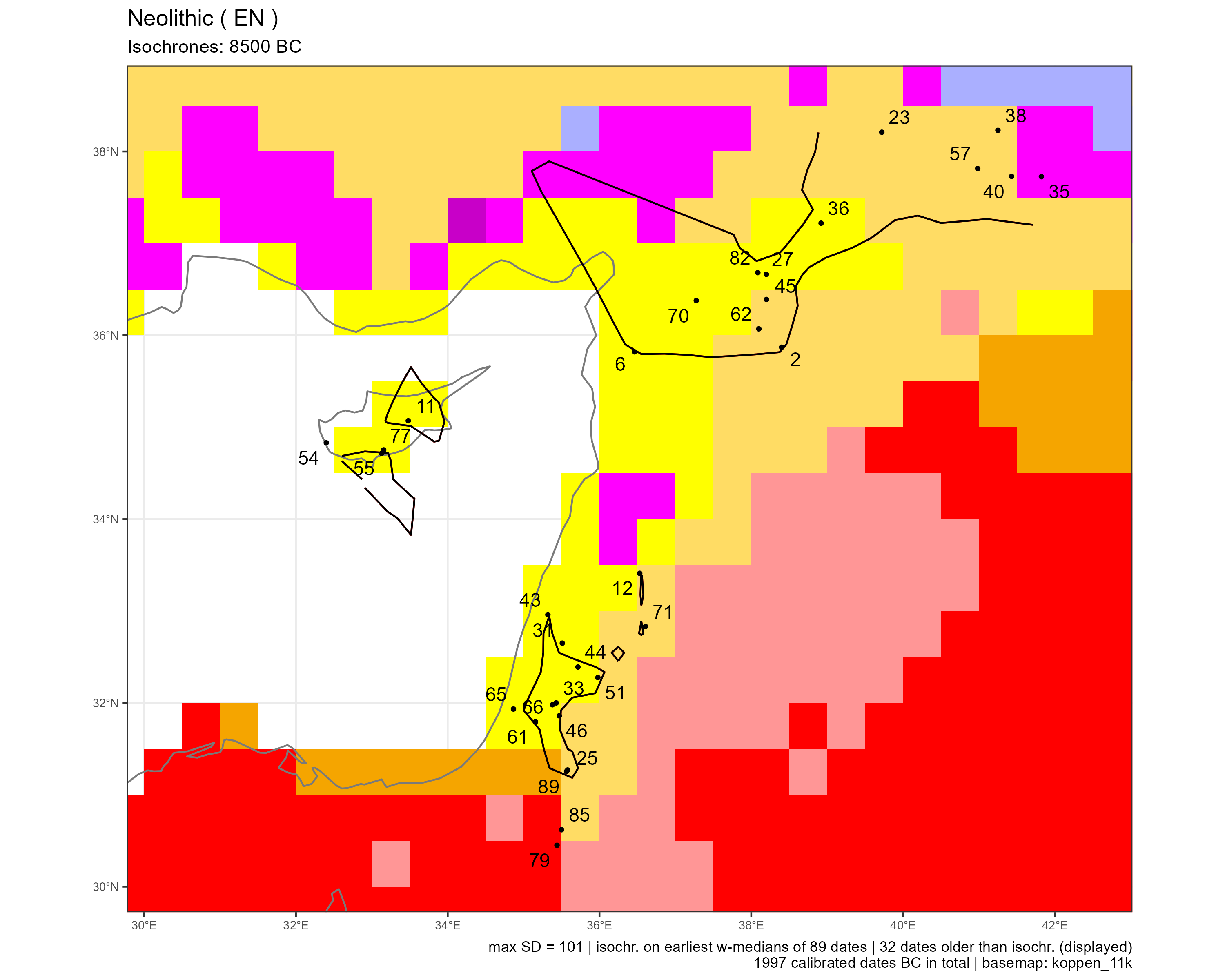



- Few changes in the estimated area with Neolithic economy.
- Southward: densification, and new neolithic occupation in a BWh climate (Arid, desert, hot): Shkarat Msaied (idf 79), Jordan.
Near East (8,000 BC)
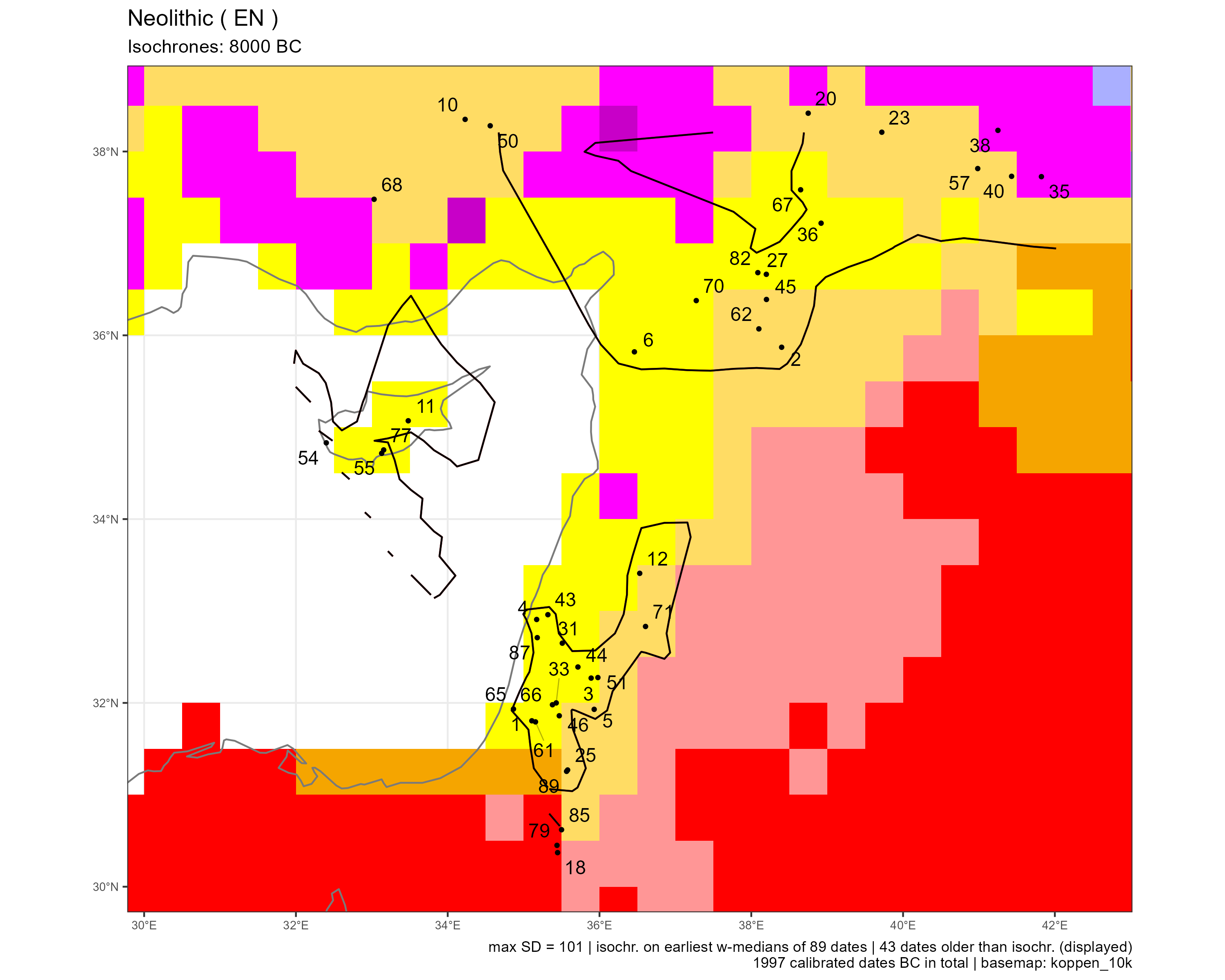



- Mount Lebanon range (Dsa) still acts as a frontier between North Levant and South Levant Neolithic
- First Central Anatolian Plateau sites: Asikli Höyük (idf 10), Kaletepe (idf 50) and Pinarbasi A (idf 68)
Near East (7,500 BC)
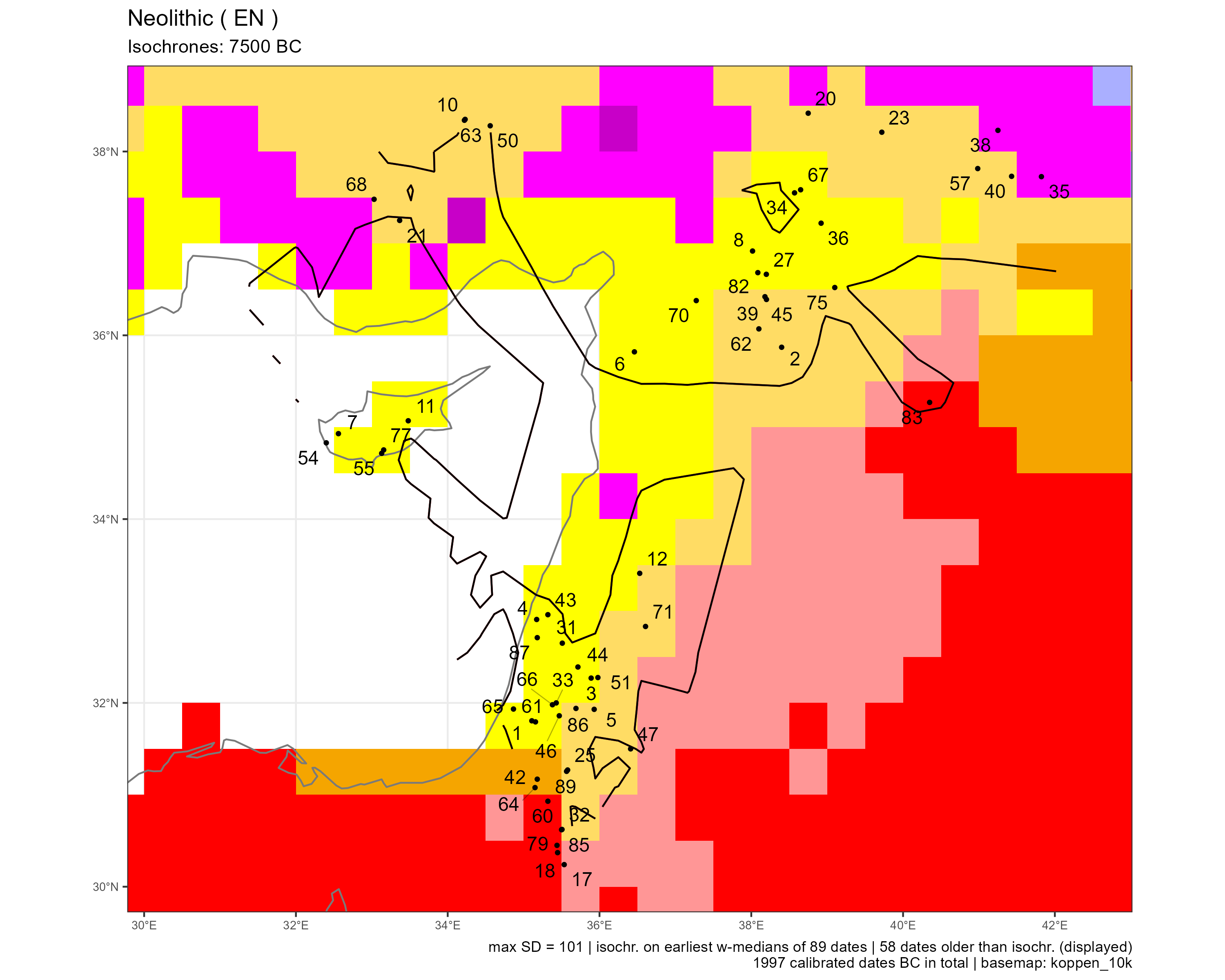



- Only one new occupation on the Central Anatolian Plateau, Musular (idf 63): barrier
- In Southern Levant, close concentration of occupations in different climates: Csa, BSk, BWh and newly BSh (Arid, steppe, hot) and BWk (Arid, desert, cold).
- Nahal Efe (idf 64) and Hemar (idf 42), Israel.
- Basta (idf 17), Jordan.
- Territorial expansion into different climates, ex: Basta (idf 17), mega-sites.
🚧 Central Anatolian barrier
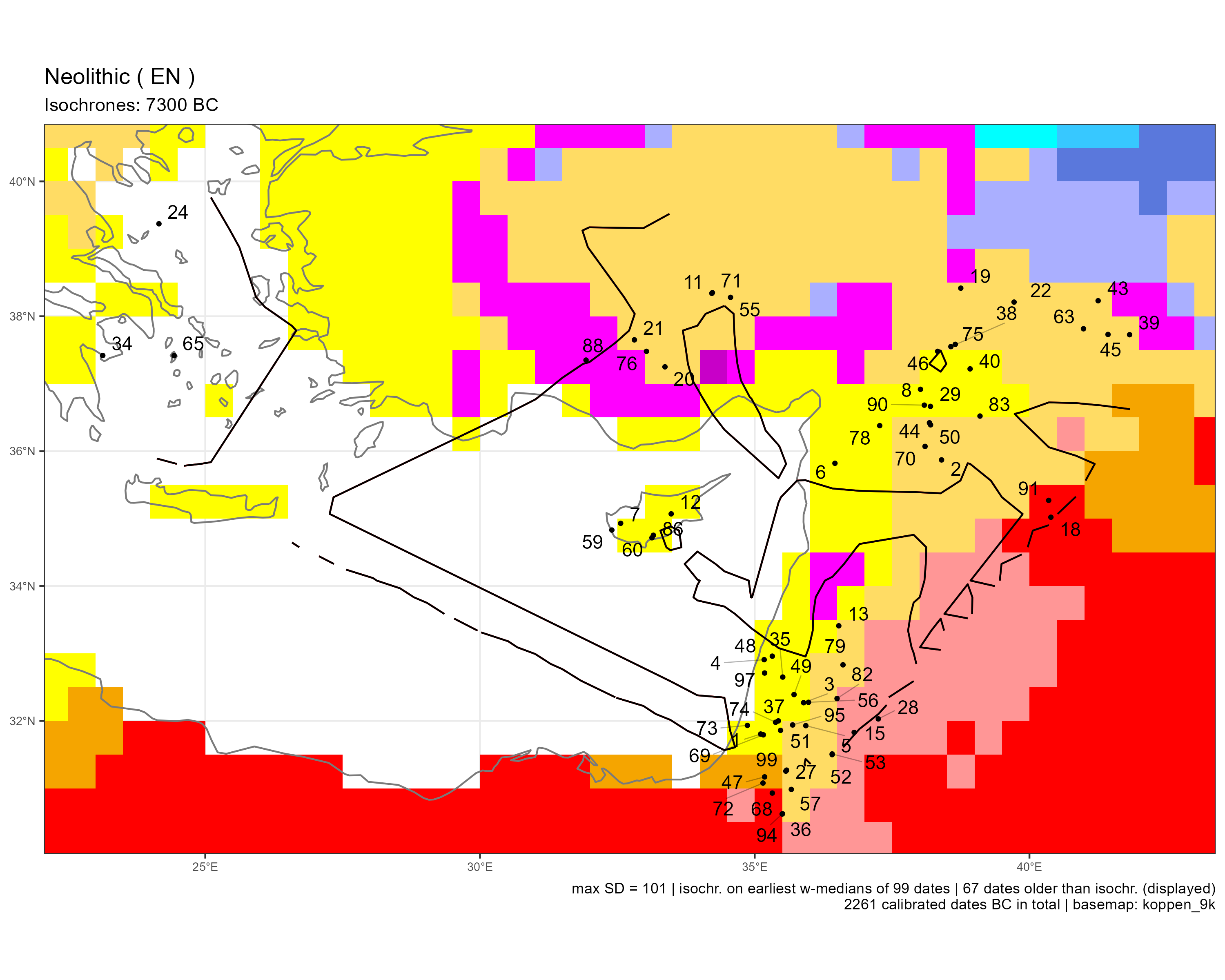
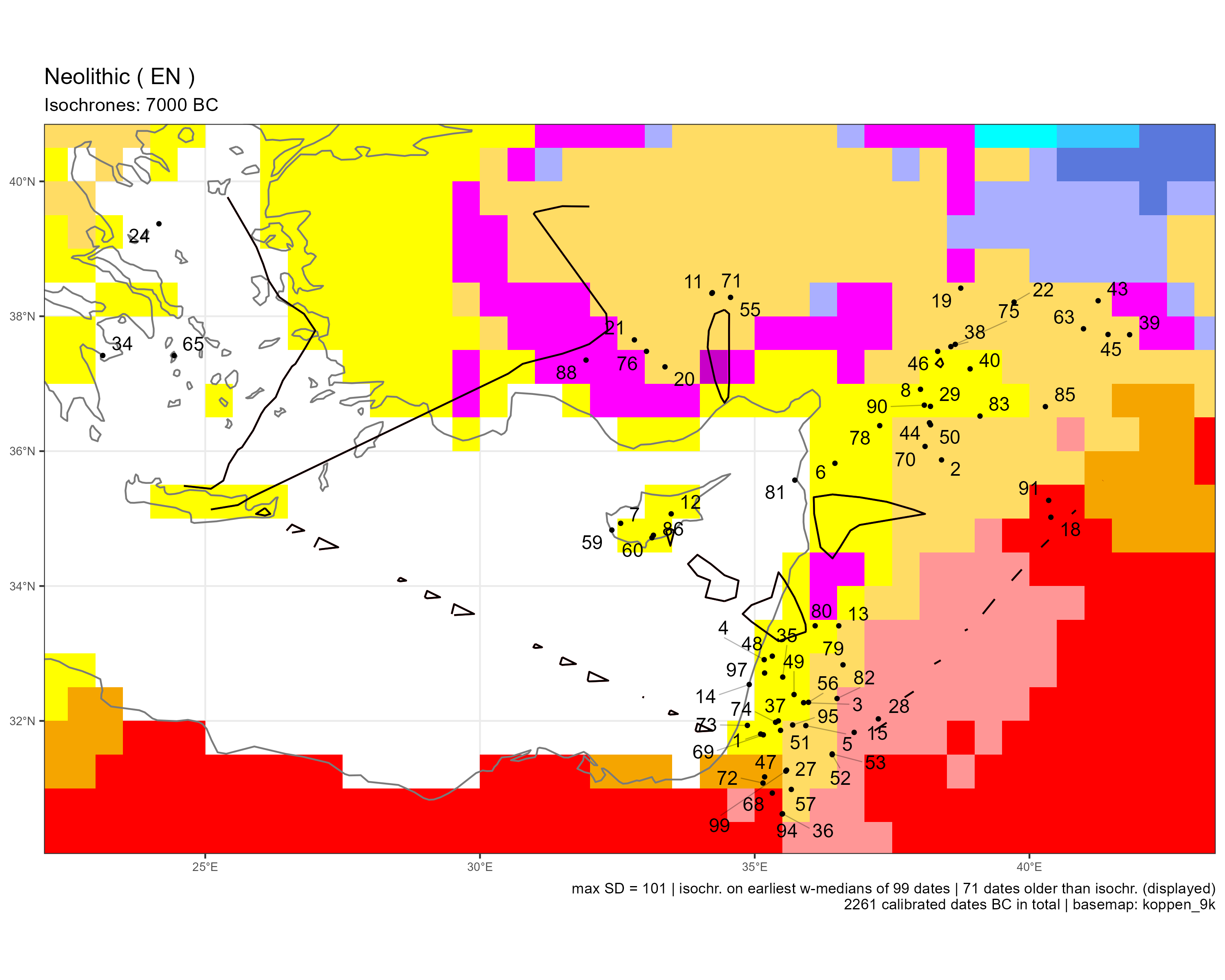
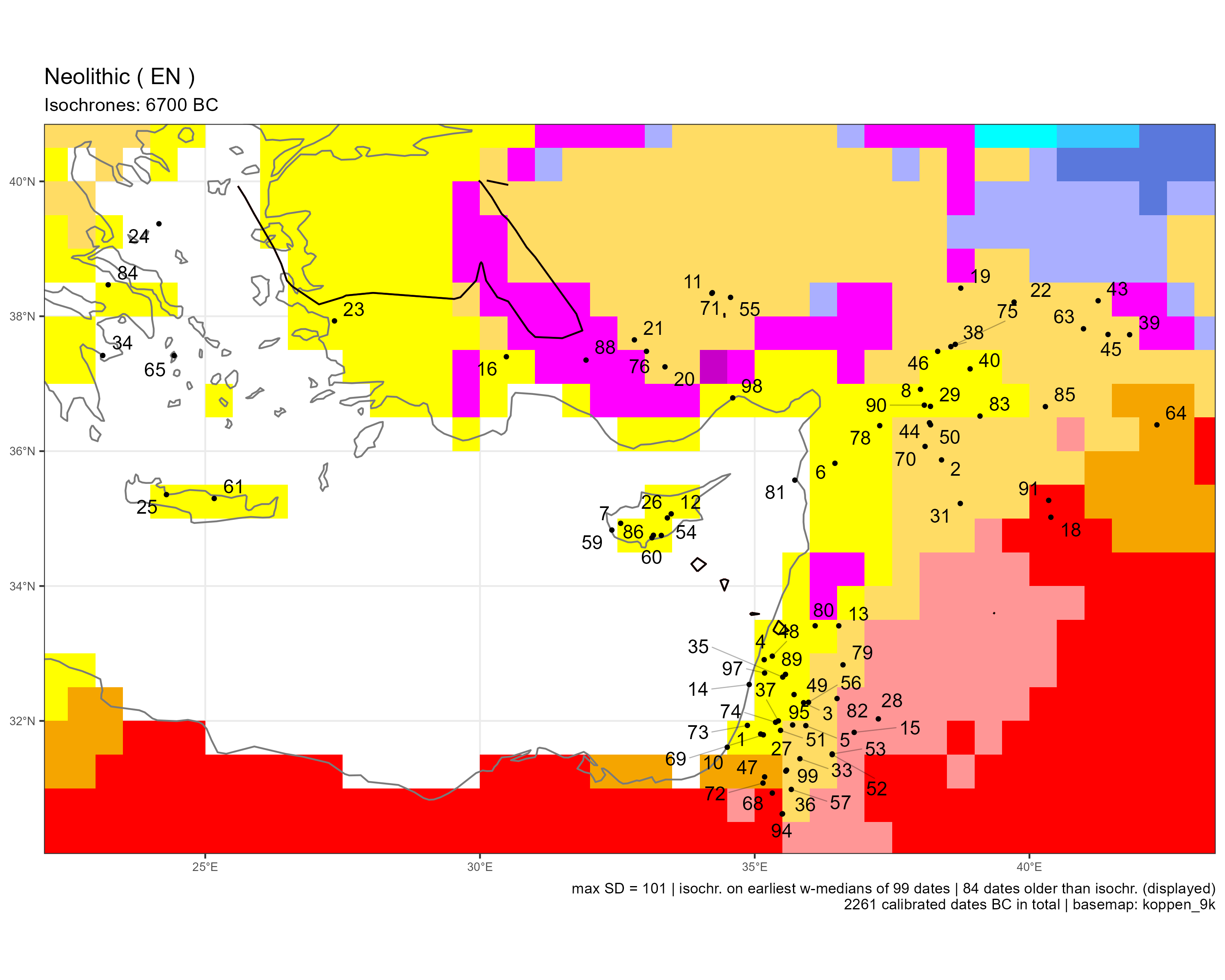
- ca 7,500-7,000 BC, disconnection between Cyprus and the main land (Levant). End of the PPNB koine.
- ca 6,700 BC, first South Western and Western Anatolian sites of Bademagaci (idf 16) and Cukurici (id 23) are temporally (w-medians) and spatially (distances) closer to Cretan sites of Delphinos (idf 25) and Knossos(idf 61) than BSk and Dsa Anatolian Plateau sites (ex: Catalhuyuk, idf 21; Suberde, idf 88)
- ca 6,200 BC, aridification of the Central Anatolian Plateau (8.2 ky BP event)
East Mediterranean (6,600 BC)
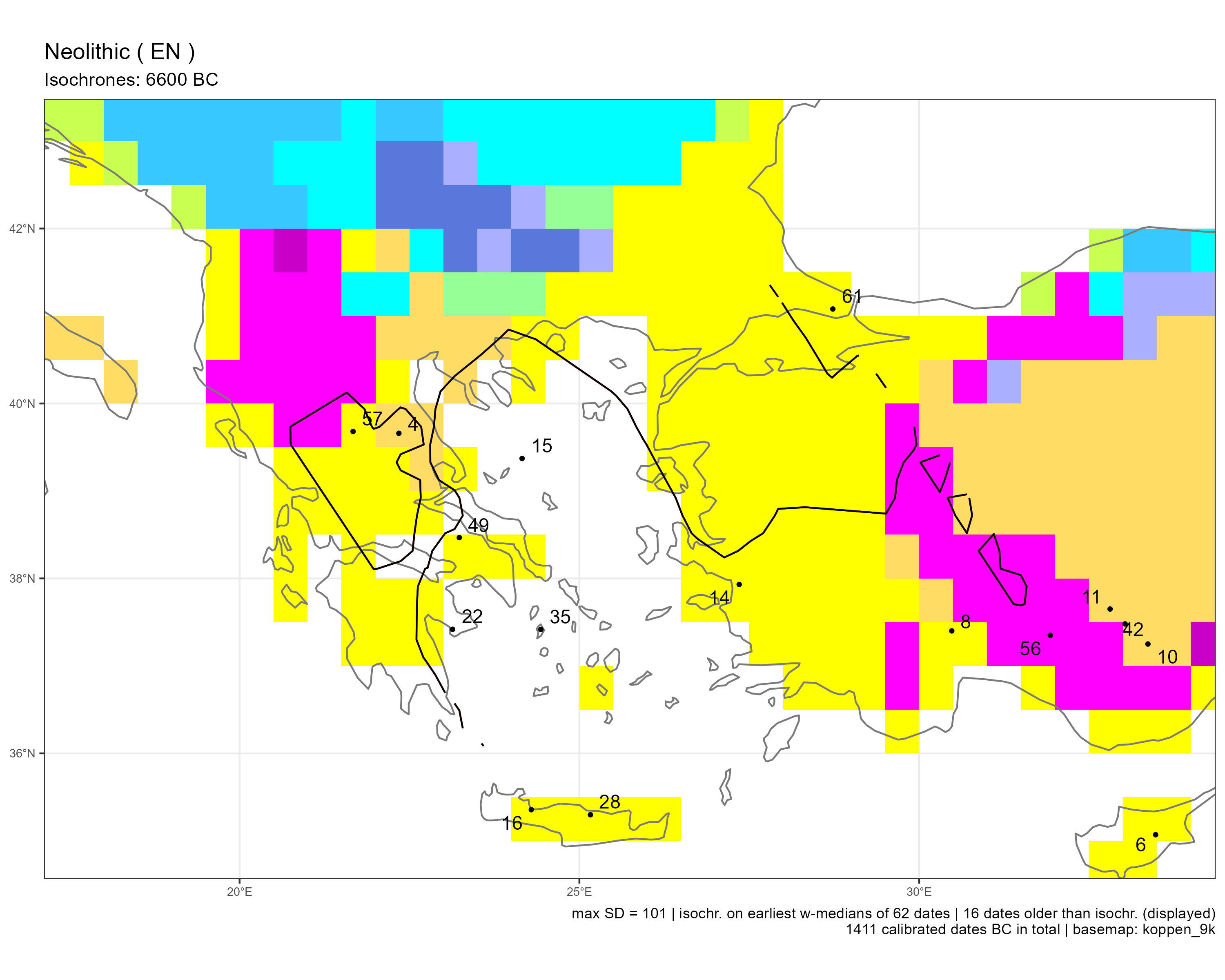



- Aegean sea and shore ‘neolithised’ before Northern Anatolia, and even before South central Anatolia. Confirms: Brami 20154.
- Location of Yarimburgaz (idf 60, ca. 8,400 BC) and Cukurici (idf 14, ca. 6,800 BC) fits more with a maritime dispersal than a terrestrian one.
- Earliest neolithic sites have pre-Neolithic (i.e. Mesolithic) obsidian coming from Melos: Maroulas (idf 35), Franchthi (idf 22) and Cyclops Cave (idf 15) with no climate data available but probably Csa. See Reingruber (2011)5.
East Mediterranean (6,200 BC)
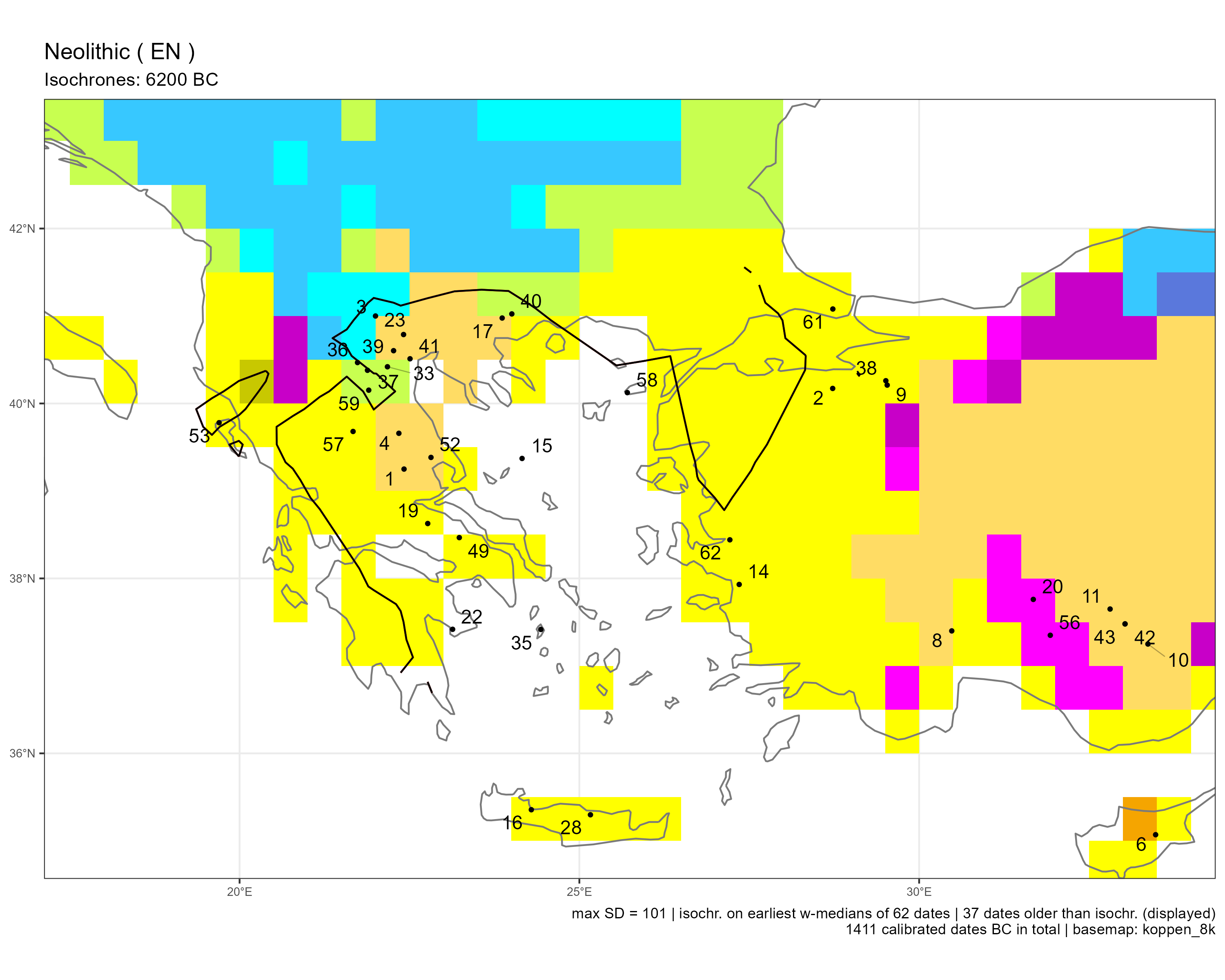



- Greece mainland turns colder (8.2 ky BP event), for example: Dsa → Dfb (Cold, no dry season, warm summer)
- In South Balkans, concentration of dates in BSk climates (Sesklo, idf 52; Paliambela, idf 41); Anzabegovo, idf 41; etc. )
- New Cfa climate (Temperate, no dry season, hot summer) with Mavropigi (idf 36), Lefkopetra (idf 33), Orfeas (idf 40)
East Mediterranean (5,800 BC)
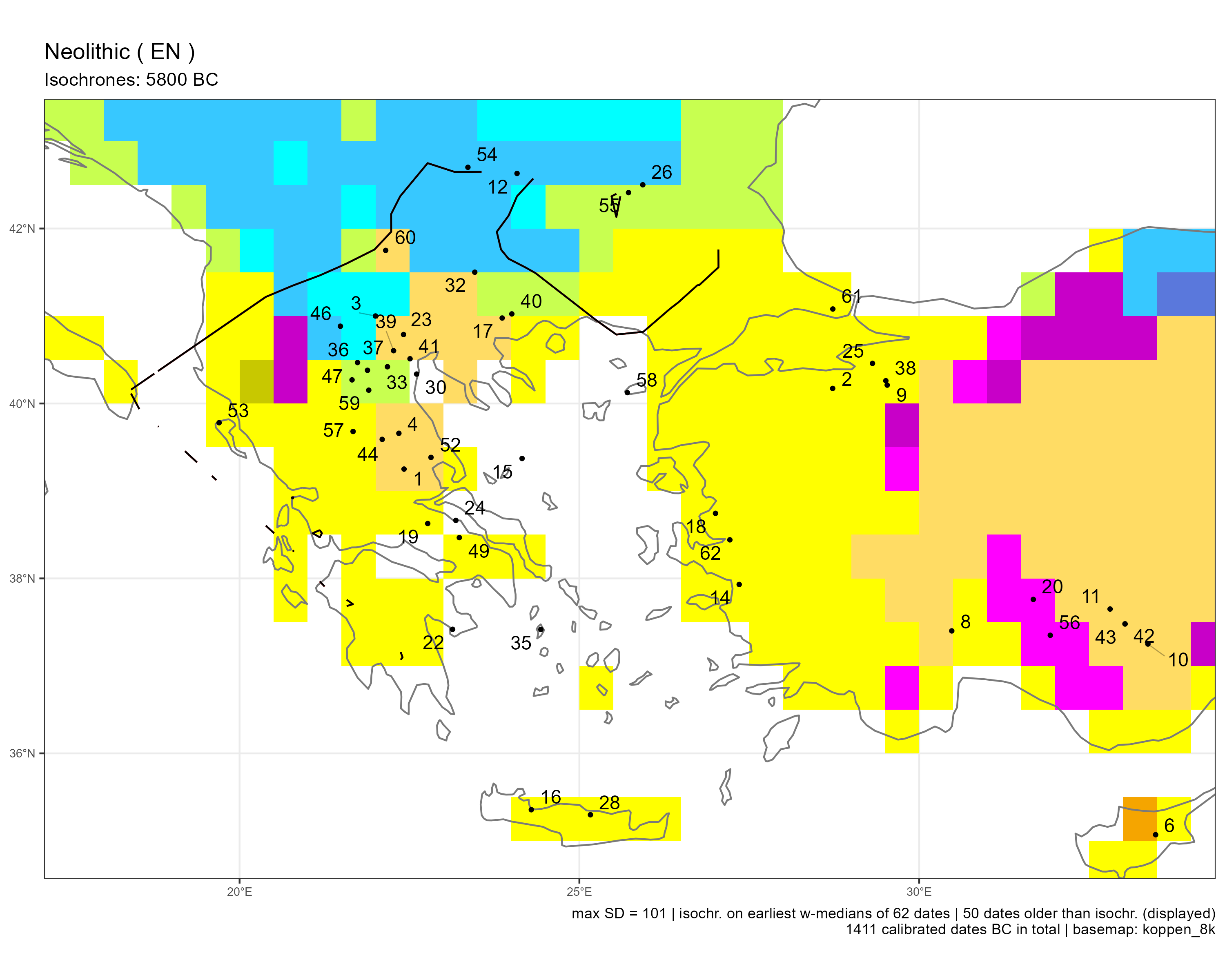



- Neolithic expansion: rapid expansion in the Southern Balkans (Csa and BSk) and slowdown in Northern Balkans. Adaptation or agriculture and stockbreeding systems to colder climates (Dfb, ex: Porodin, idf 46). Confirms: Krauß et al. 20186, Ivanova et al. 20187.
- Westward: South of Italy (off the map) is reached, probably from Corfu: Sidari (idf 53)
Central Mediterranean (6,000 BC)
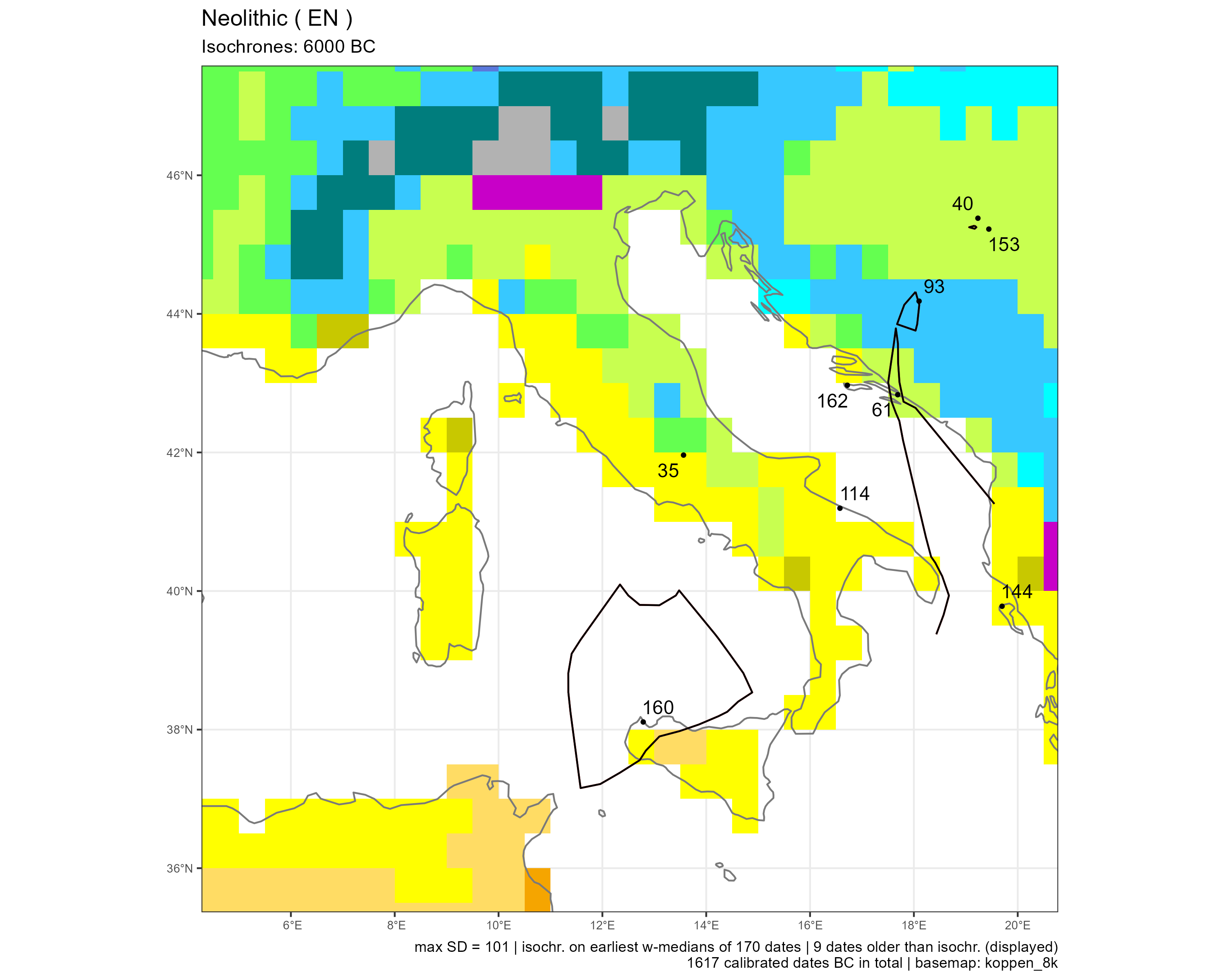



- ca 6,300 BC, few years after Sidari (idf 147), neolithic features in Grotta del’Uzzo (idf 160, no climatic data) but possible Meso/Neo acculturation,
- ca 6,000 BC, Pulo di Molfetta (idf 147, no climatic data), clear evidence of neolithisation (e.g. built walls)
Central Mediterranean (5,700 BC)
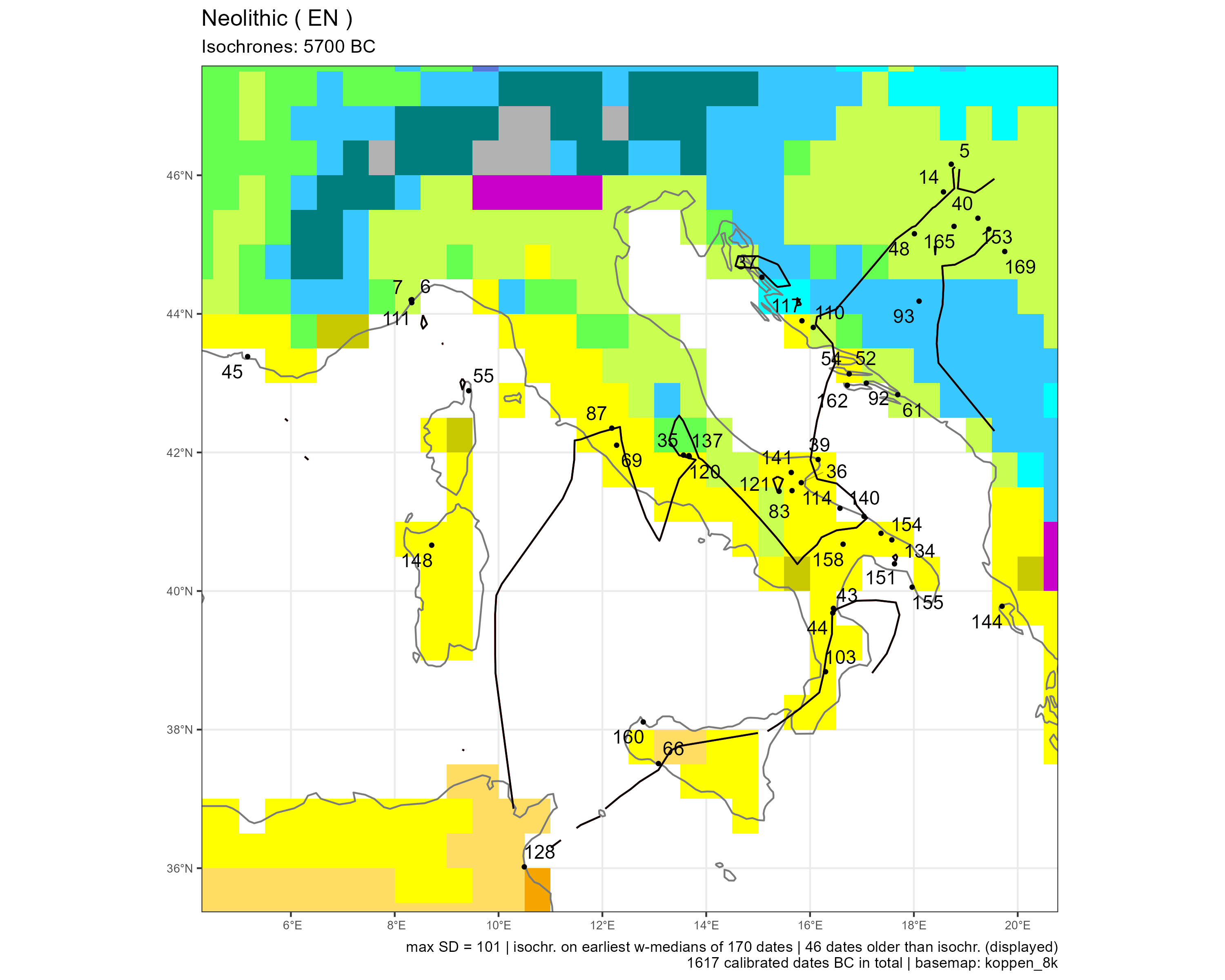



- 5,800 BC, early Neolithic settlements (leapfrog) of Pollera, Arma dell’Aquila and Arene Candide in Liguria and Cfa climates.
- 5,800-5,600 BC: Rapid inland expansion Csa, for ex: La Marmotta (idf 69) and Rio Tana (idf 120), Central Italy. Confirms: Binder et al. 20228, Mazzucco et al. 20239
- 5,700 BC, SHM-1 (idf 128) in Tunisia in BSk climate, maybe related to Kronio (idf 66) in Sicily, dated ca 5,900 BC.
Central Mediterranean (5,400 BC)
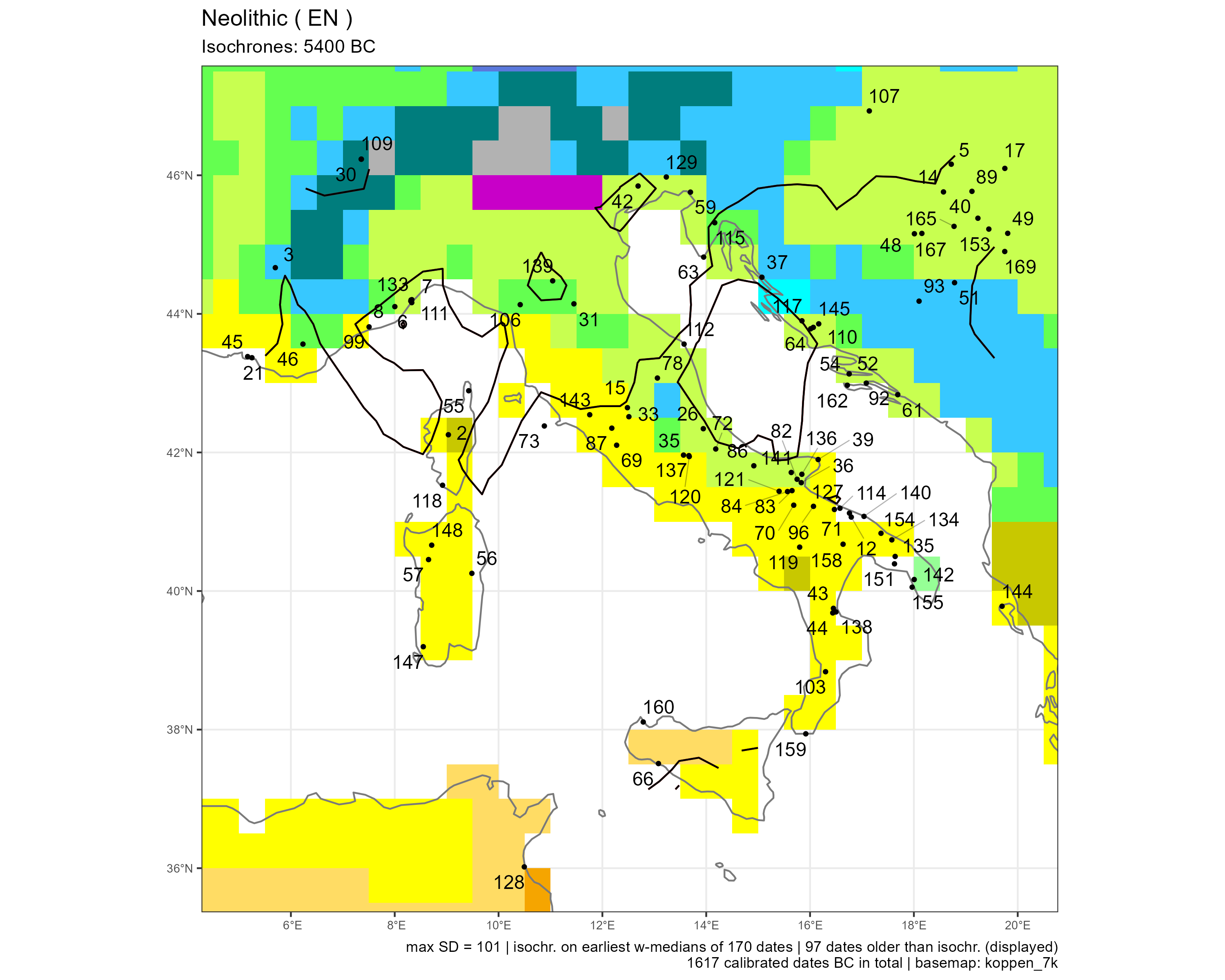



- 5,700-5,400 BC, in Italy, slowdown of the spread of Neolithic after its rapid expansion in South Italy. The change between mostly Csa (South of Abruzzo) to Cfa (North of Abruzzo) might be the reason.
- 5,700-5,400 BC, on both sides of the Ardriatic Sea (Italy and Croatia), linear gradient: maritime networks.
West Mediterranean (5,600 BC)
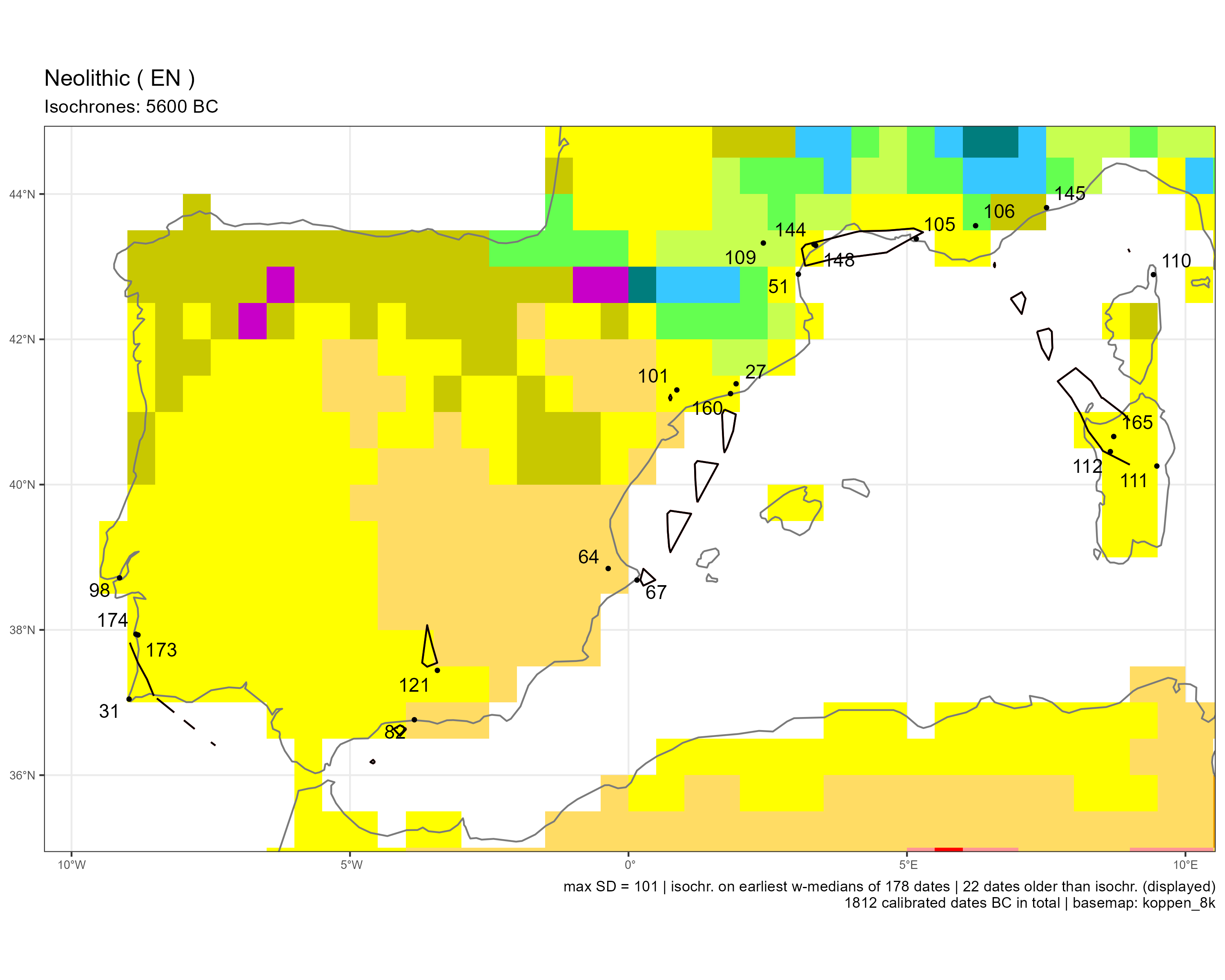



- Leapfrogs to Southern France and the Iberian Peninsula, with mostly settlements in (same) Csa climates, among others: Pont de Roque-Haute (idf 148, Southern France), Coves del Fem (idf 101, Northeastern Spain), Cabranosa (idf 31, South Portugal).
- Fonbregoua in Cfb climate (Temperate, no dry season, warm summer) and Gazel in Cfa climate.
West Mediterranean (5,300 BC)
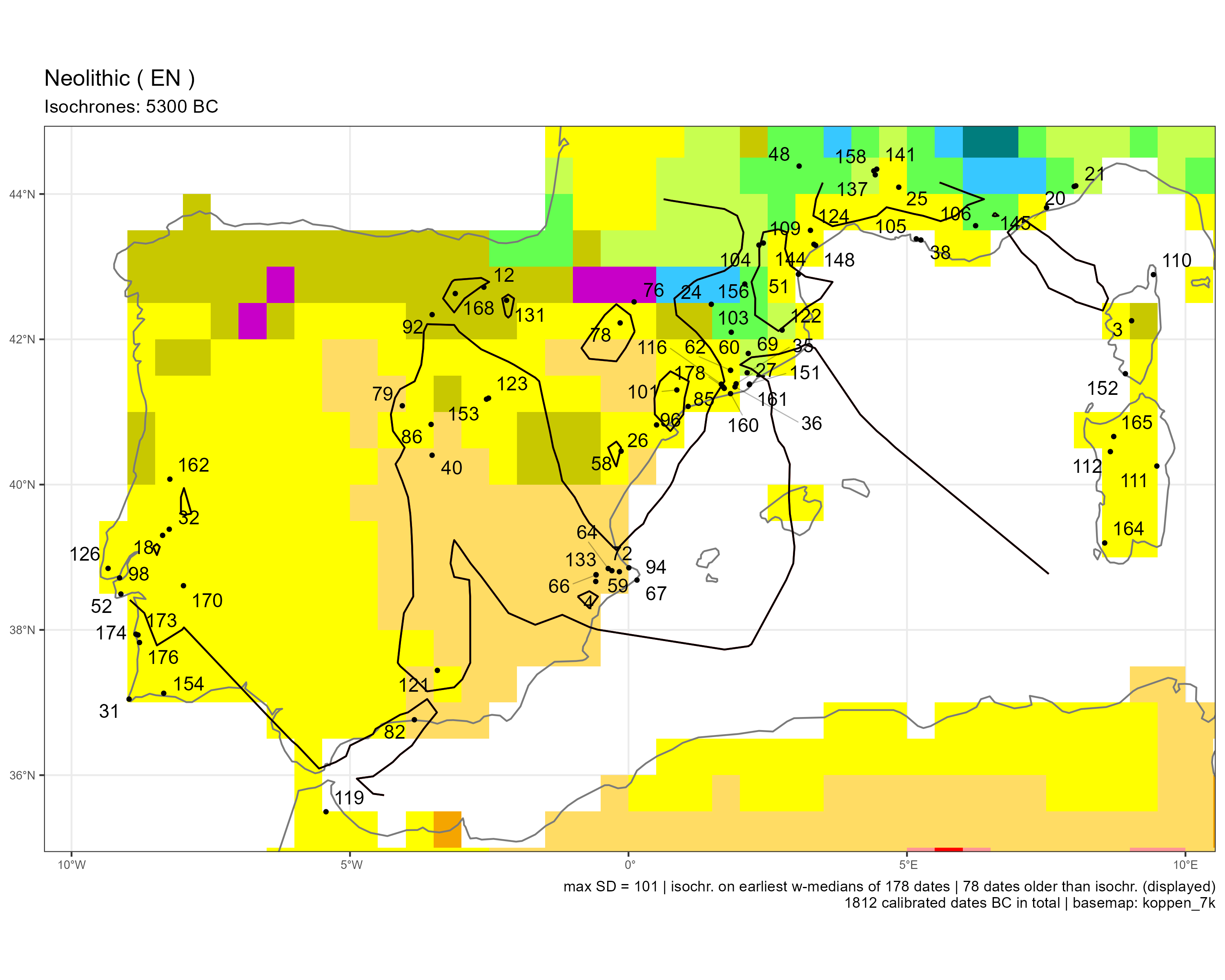



- 5,900-5,300 BC, neolithisation of Southwestern Iberian Peninsula (Portugal).
- Catalonia area: diversity of climates that slowdown the spread of the Neolithic (acclimatization): Csa, Cfa, Cfb.
- Valencia area, two main climates of Early Neolithic (Csa and BSk) favoring a faster diffusion.
- Pioneer sites in Csb climate (Temperate, dry summer, warm summer) between 5,600 and 5,300 BC: Balma Margineda (idf 24, Andorra), Abri des Castelli (idf 3, Corsica) and, later, a cluster in the upper Ebro Basin: Tumul del Padro (idf 168), etc.
End of the Mediterranean Neolithisation
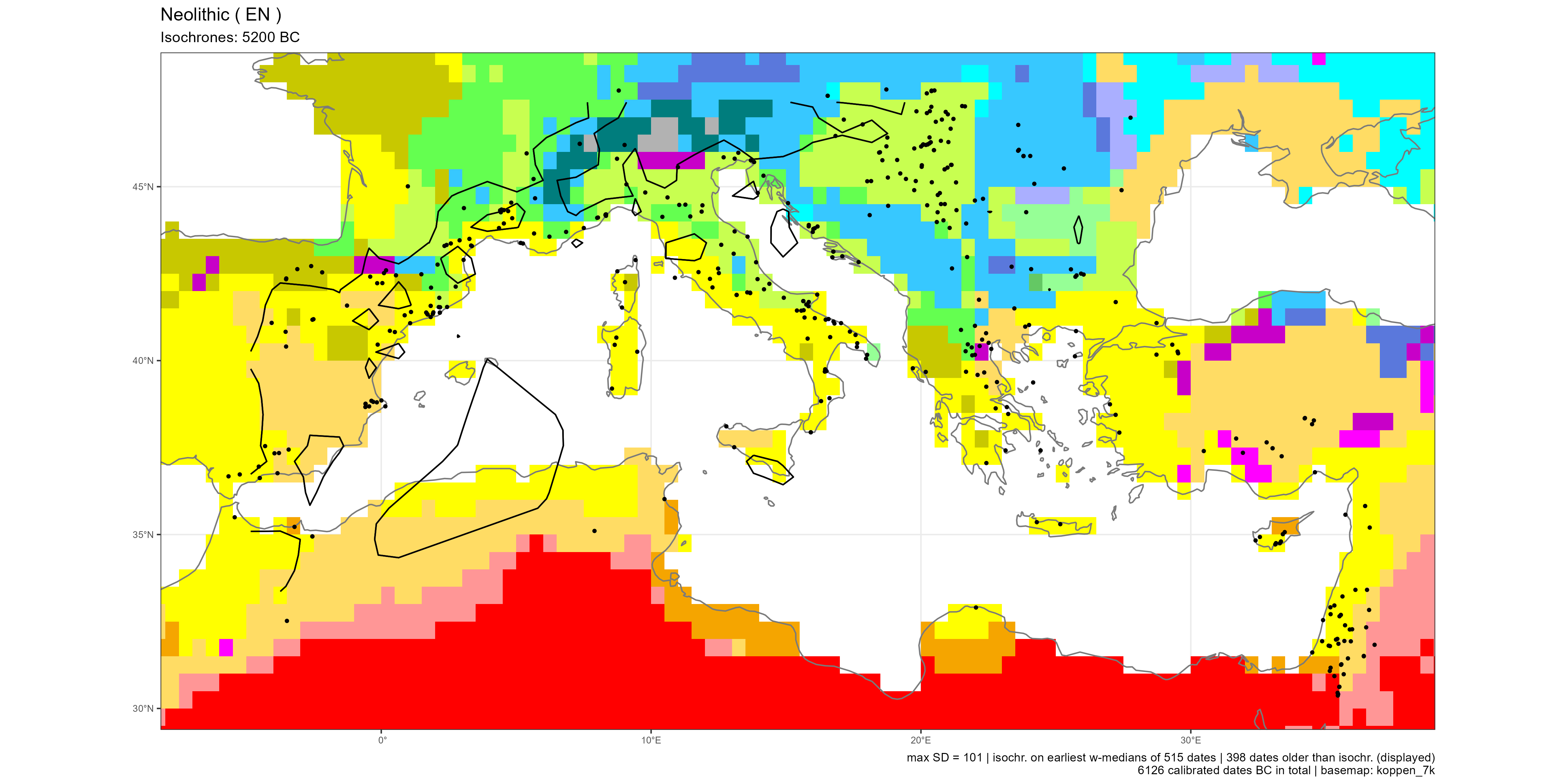
Synthesis
Climate evolution
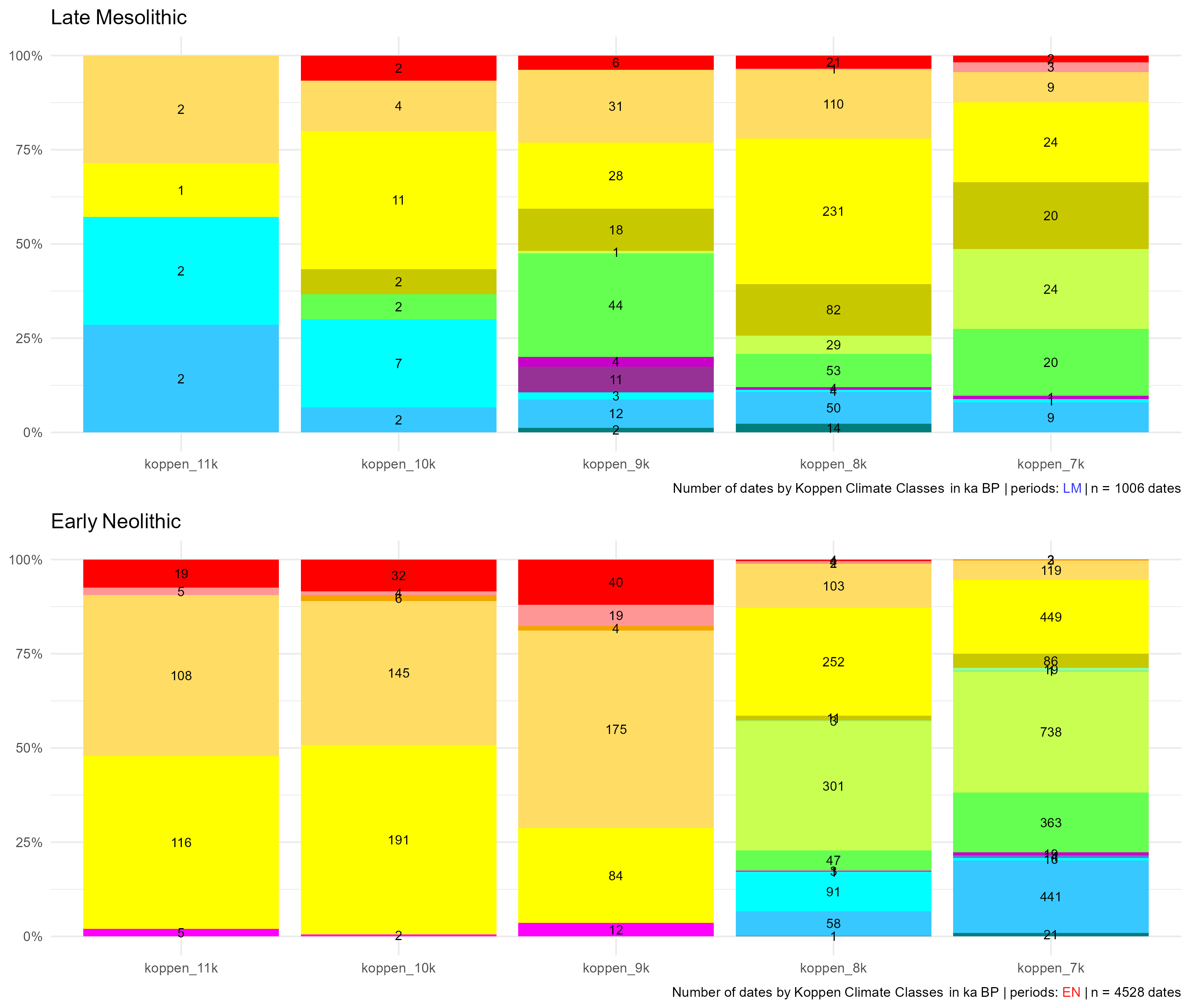
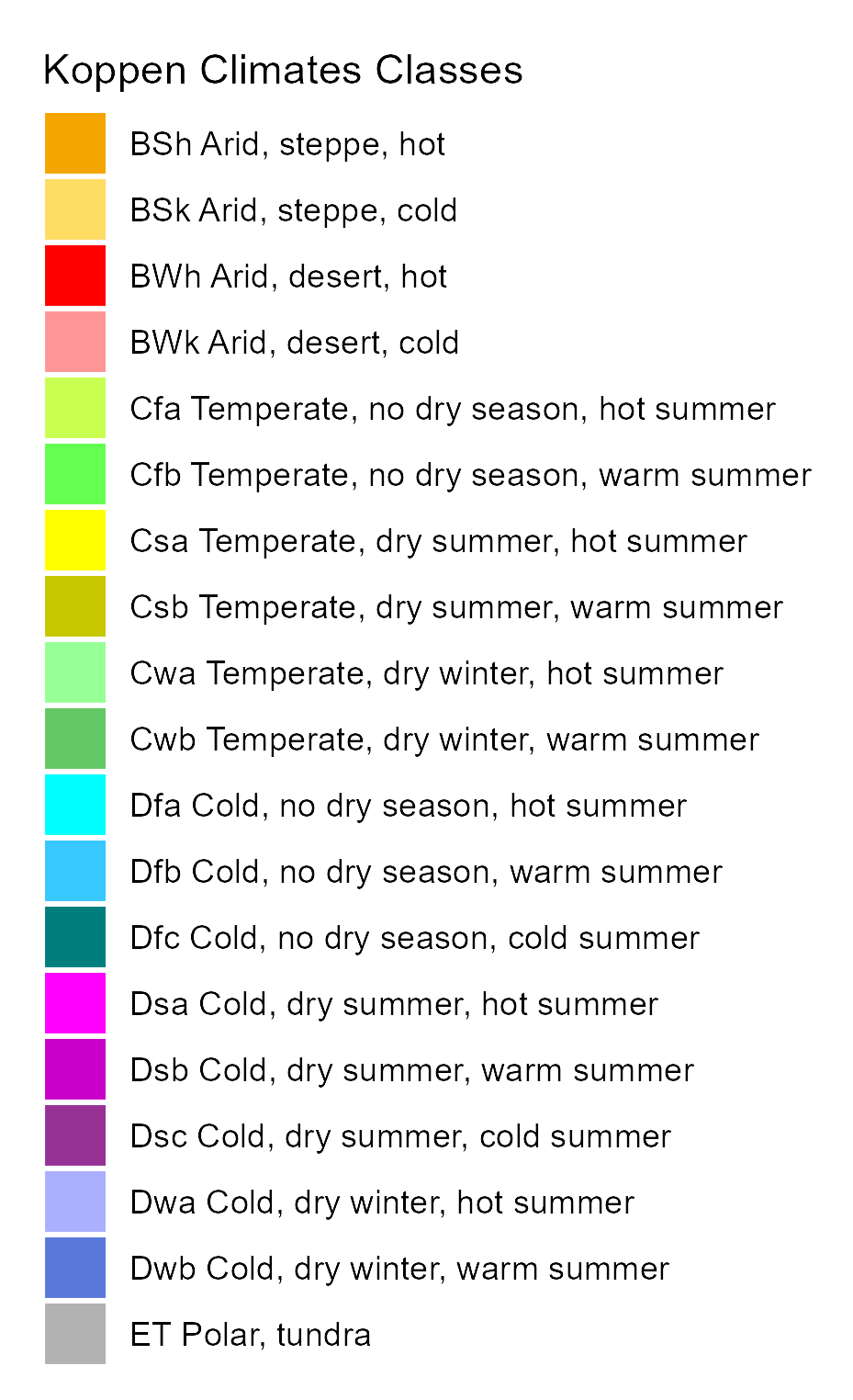
Climates occupied by the Early Farmers
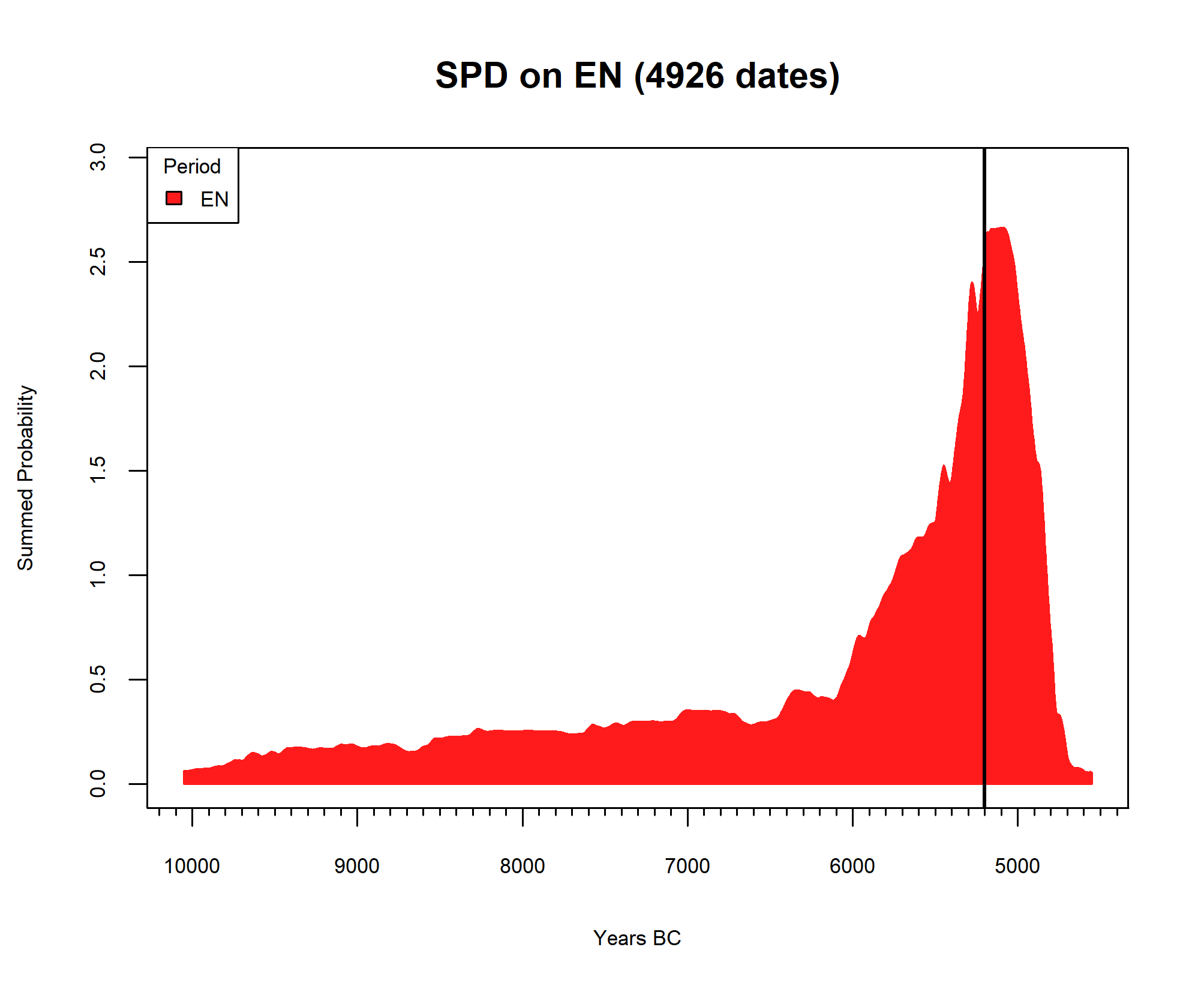
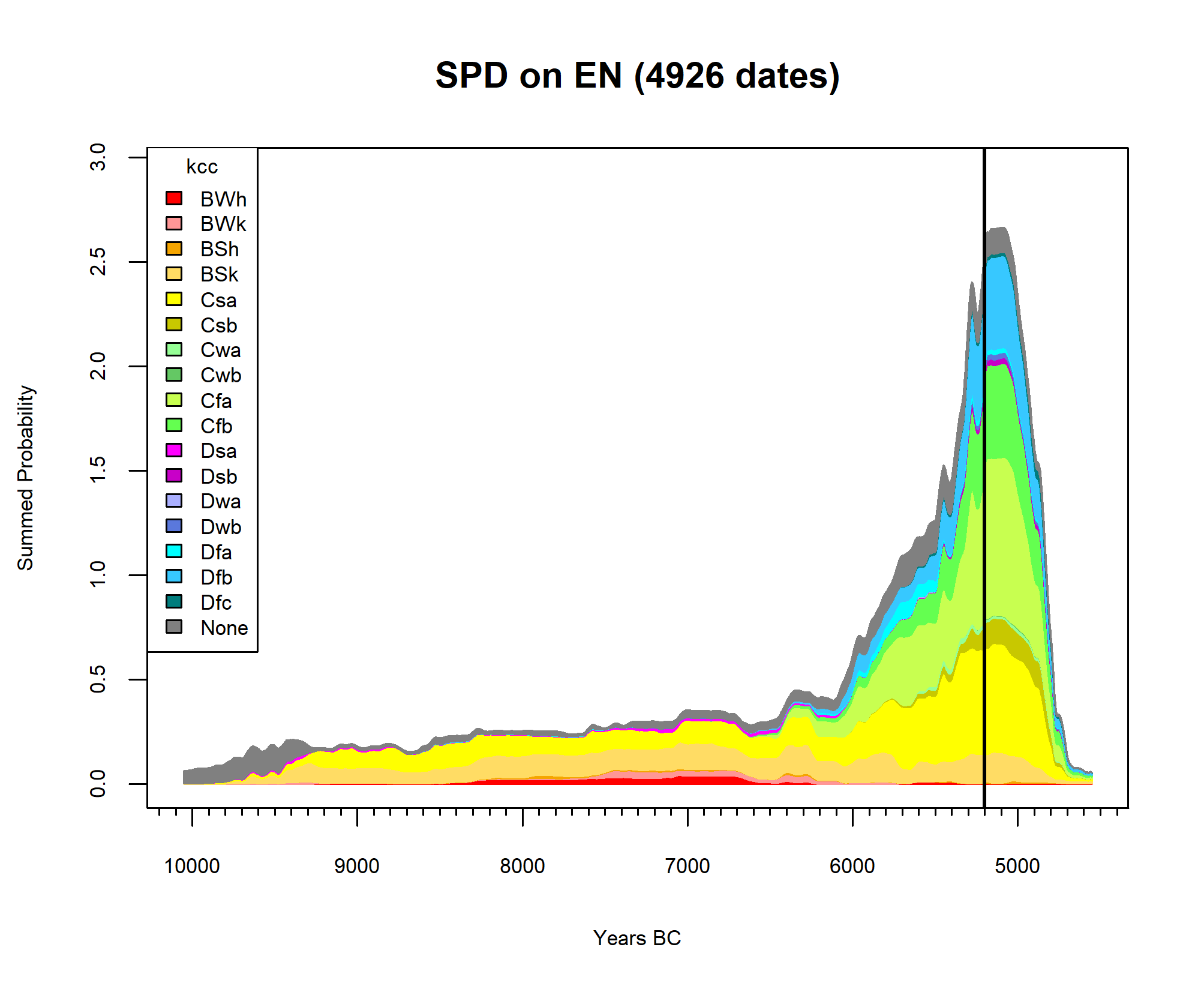
ca 10,000-9,500 BC, Near East BSk (Temperate, dry summer, warm summer), Csa (Temperate, dry summer, hot summer) and, more rarely, Dsa (Cold, dry summer, hot summer) climates.
ca 9,000-7,500 BC, Near East BWh climate (Arid, desert, hot), ie: arid margins.
ca 8,000-7,500 BC, Near East (South Levant), BSh (Arid, steppe, hot), and BWk (Arid, desert, cold).
ca 6,500-6,000 BC, Balkans (between North and South), Cfa climate (Temperate, no dry season, hot summer).
ca 6,100-6,000 BC, Balkans, Dfb (Cold, no dry season, warm summer) = Proto-Sesklo Culture.
ca 6,100-6,000 BC, Northern Balkans and Central Europe, Dfa (Cold, no dry season, hot summer), outside the studied area.
ca 5,500-5,300 BC, Western Mediterranean, Csb climate (Temperate, dry summer, warm summer)
Thank you
Footnotes
Late Foragers. Create an image in a portrait layout of: A Mediterranean coastal area, view from distance (bird eye), during the Late Mesolithic, with a temperate to cold and humid climate, showing an estuary river banks and a part of a marsh. The dominant colors in the image should be cool tones, such as blues and green, and the people should be dressed in furs suitable for cold to temperate climates (Koppen climate classes: Cfb and Dfa). Include only 5 characters: A women collecting sea shells and collecting fruits and wild seeds in cane baskets. A children collecting wild seeds in cane baskets. A man fishing with a vegetal net. A woman hunting ducks with a bow. A man skinning a fish. Include only these items: A vegetal net An arrow. Living wild animals should be distant from humans. The characters and animals in the image must be realistic. The faces of the people should be well-defined. The tools should be made of wood, flints and bones only. The image should have: No domestic animals. No ceramic potteries. No glass. No candle or wood fire. Do not include anything that I didn’t described
Early Farmers. The scene depicts a Mediterranean landscape set in a river valley of the inland Iberian Peninsula during the Neolithic period. The environment reflects the typical Mediterranean vegetation, including holm oaks, oak trees, and shrubs. The landscape shows a mosaic of forests and small cereal fields, with more emphasis on the dense forest. In the foreground, a group of five people is working in the fields, harvesting wheat using wooden and flint sickles. The group consists of three men and two women, all dressed in prehistoric brown wool and linen garments, appropriate for the period. In the background, there is a small flock of black goats and brown sheep, which are being watched over by an elderly woman and a child, both holding wooden staffs. The animals are enclosed within a small wooden pen located far from the cereal fields prompt@ChatGPT.
Beyer, R. M., Krapp, M., & Manica, A. (2020). High-resolution terrestrial climate, bioclimate and vegetation for the last 120,000 years. Scientific data, 7(1), 236.
Brami, M. N. (2015). A graphical simulation of the 2,000-year lag in Neolithic occupation between Central Anatolia and the Aegean basin. Archaeological and Anthropological Sciences, 7, 319-327.
Reingruber, A. (2011). Early Neolithic settlement patterns and exchange networks in the Aegean. Documenta Praehistorica, 38, 291-306.
Krauß, R., Marinova, E., De Brue, H., & Weninger, B. (2018). The rapid spread of early farming from the Aegean into the Balkans via the Sub-Mediterranean-Aegean Vegetation Zone. Quaternary International, 496, 24-41. https://doi.org/10.1016/j.quaint.2017.01.019
Ivanova, M., De Cupere, B., Ethier, J., & Marinova, E. (2018). Pioneer farming in southeast Europe during the early sixth millennium BC: Climate-related adaptations in the exploitation of plants and animals. PLoS One, 13(5), e0197225. https://doi.org/10.1371/journal.pone.0197225
Didier Binder, Lucia Angeli, Louise Gomart, Thomas Huet, Roberto Maggi, Claire Manen, …, (2022). Le complexe de la Céramique Imprimée en Méditerranée centrale et nord-occidentale : une synthèse chronoculturelle (VIIe et VIe millénaires AEC). In: Céramiques imprimées de Méditerranée occidentale (VIe millénaire AEC) : données, approches et enjeux nouveaux. Actes de la séance de la Société préhistorique française de Nice (mars 2019), D. Binder and C. Manen (eds), Paris, Société préhistorique française.
Mazzucco, N., Mineo, M., Gibaja, J.F. (2023). La Marmotta site in the framework of the Early Mediterranean Neolithic. In: The Submerged Site of La Marmotta. Oxbow Books, Rome, Italy. Oxford.
Ammerman, A. J., & Cavalli-Sforza, L. L. (1971)[^2]. Measuring the rate of spread of early farming in Europe. Man, 674-688.
Fort, J. (2022). The spread of agriculture: quantitative laws in prehistory?. In Simulating Transitions to Agriculture in Prehistory (pp. 17-28). Cham: Springer International Publishing.
Betti, L., Beyer, R. M., Jones, E. R., Eriksson, A., Tassi, F., Siska, V., … & Manica, A. (2020). Climate shaped how Neolithic farmers and European hunter-gatherers interacted after a major slowdown from 6,100 BCE to 4,500 BCE. Nature Human Behaviour, 4(10), 1004-1010.
Binder, D., Angeli, L., Gomart, L., Huet, T., Maggi, R., Manen, C., … & Tagliacozzo, A. (2019, March). L’Impresso-cardial du nord-ouest et ses rapports avec la «zone-source»: une synthèse chrono-culturelle. In Céramiques imprimées de Méditerranée occidentale. Matières premières, productions, usages.


